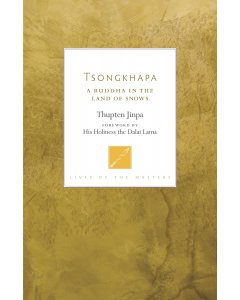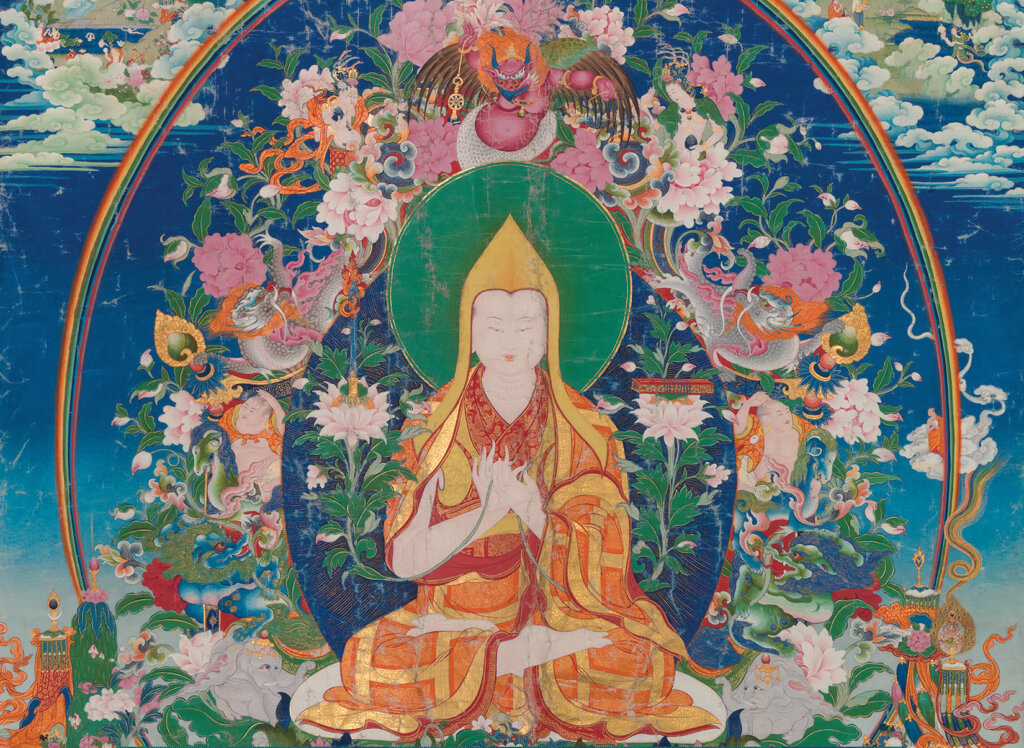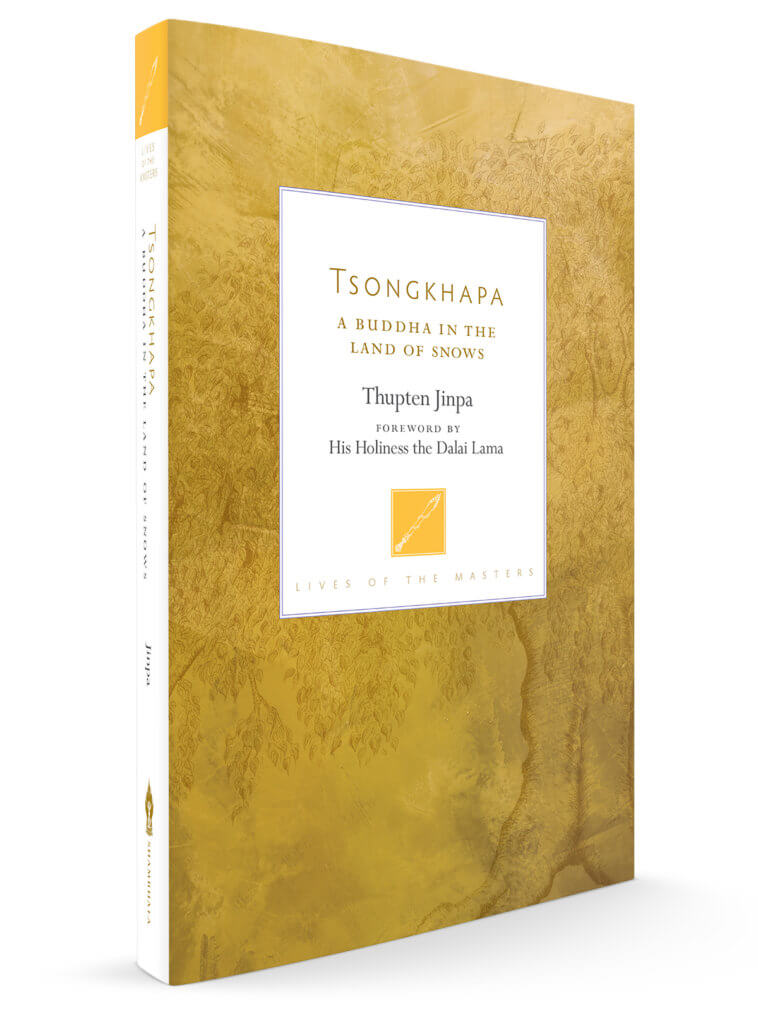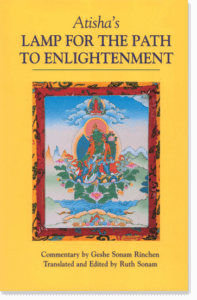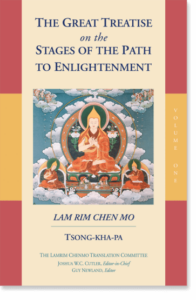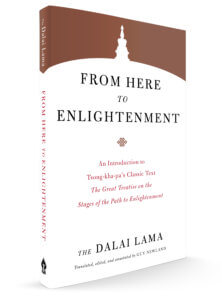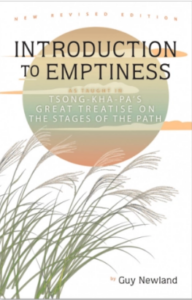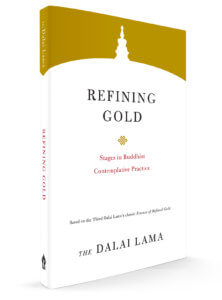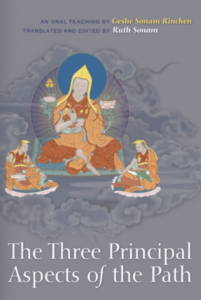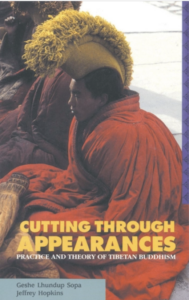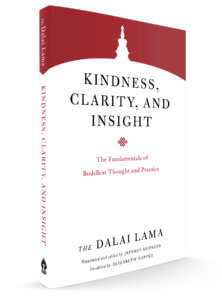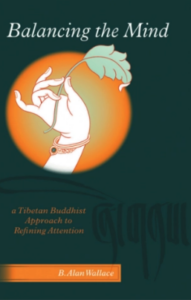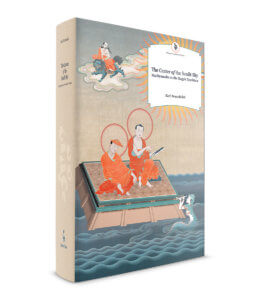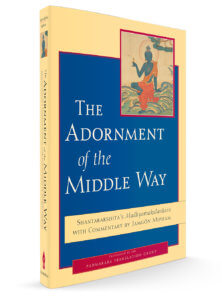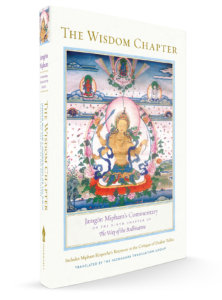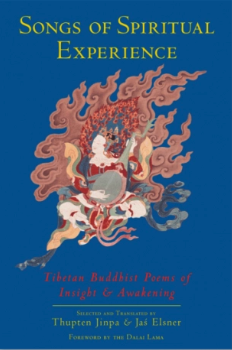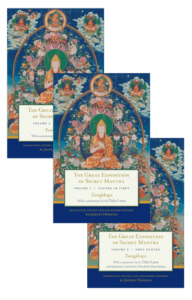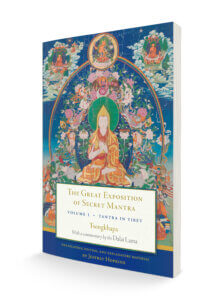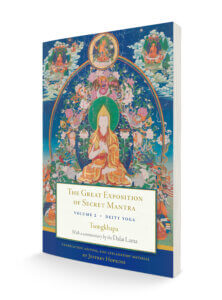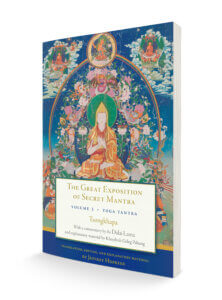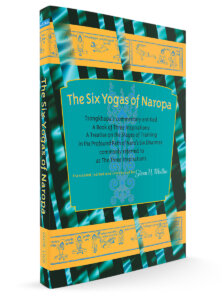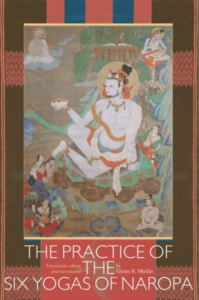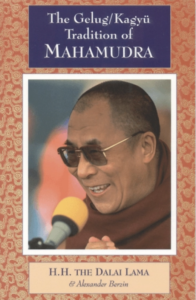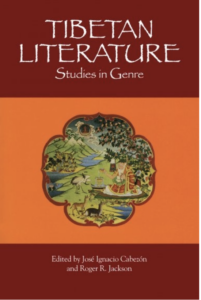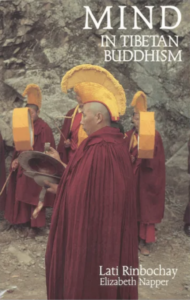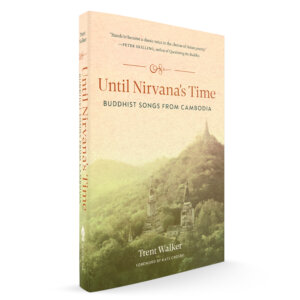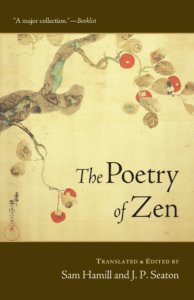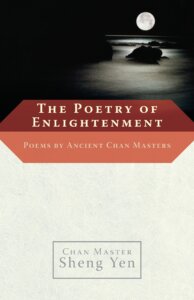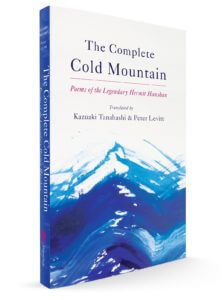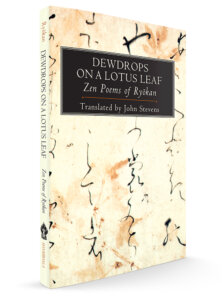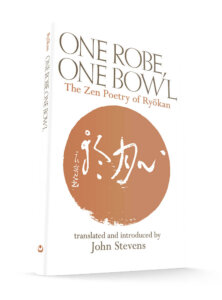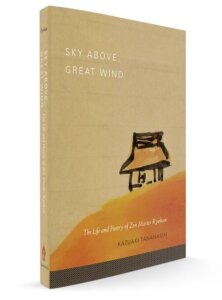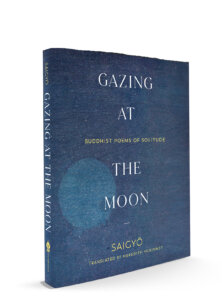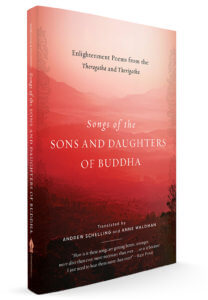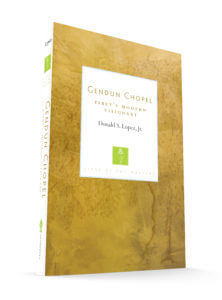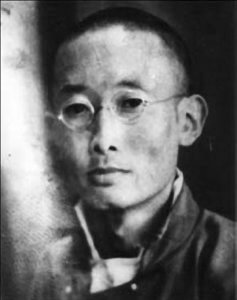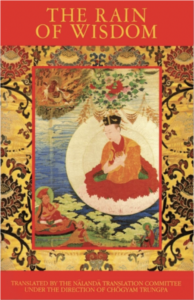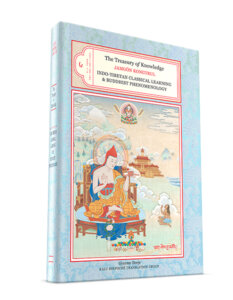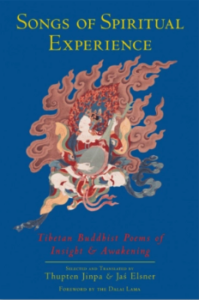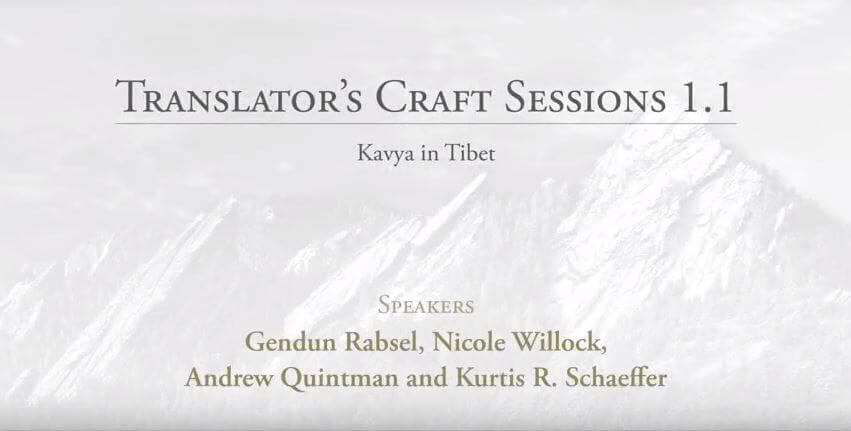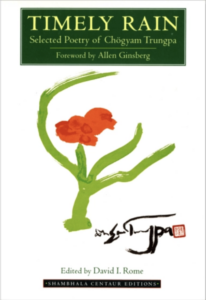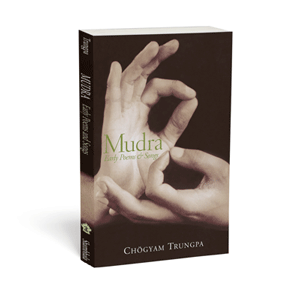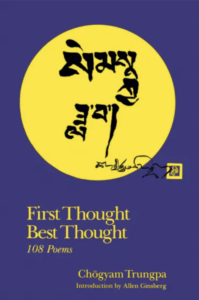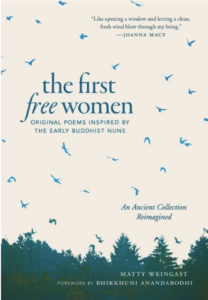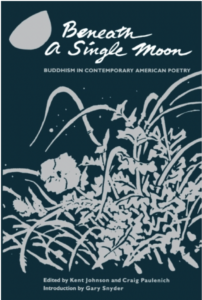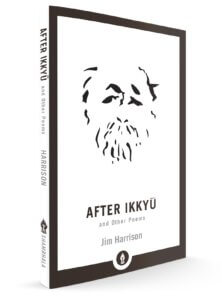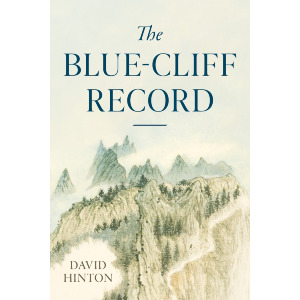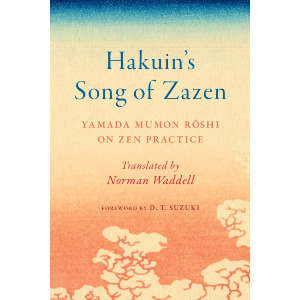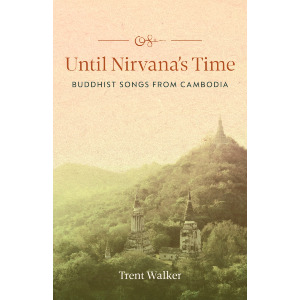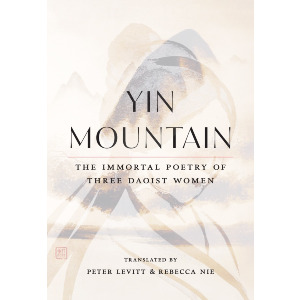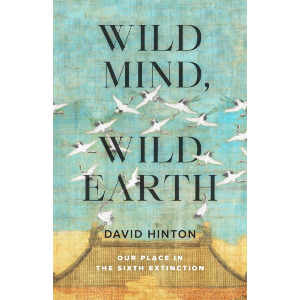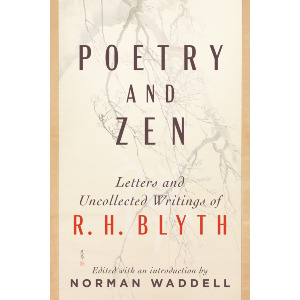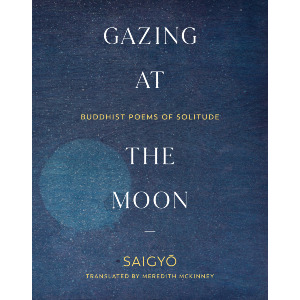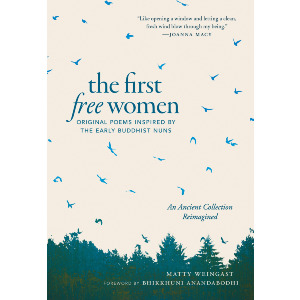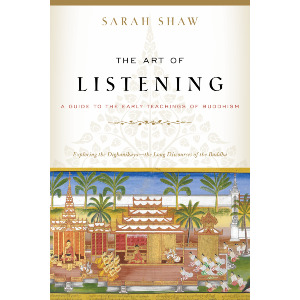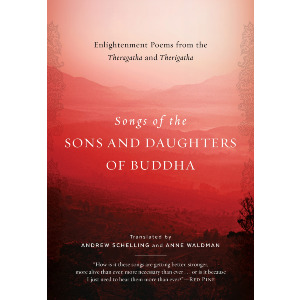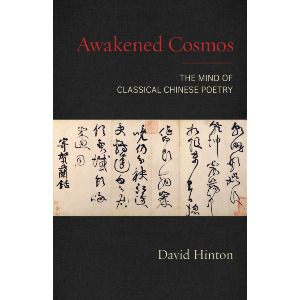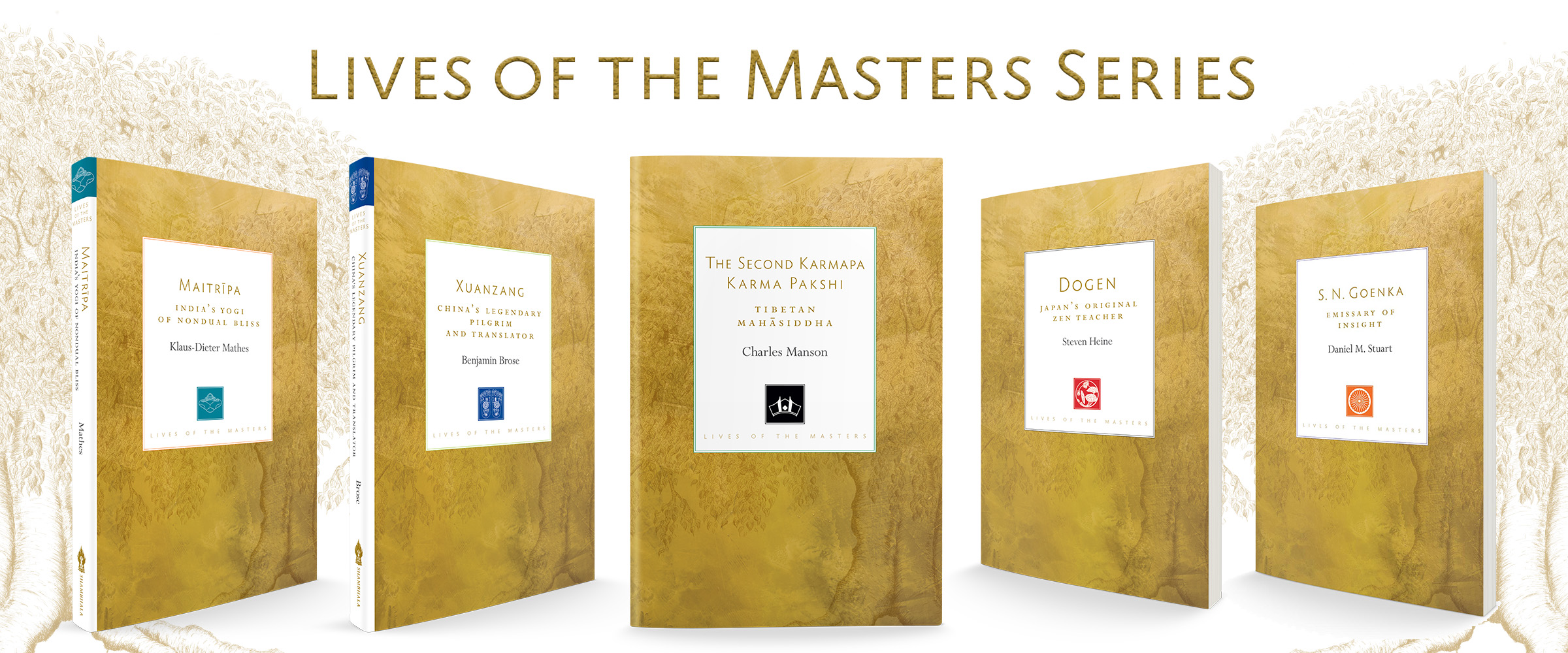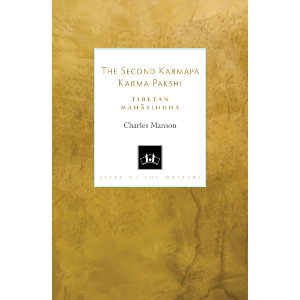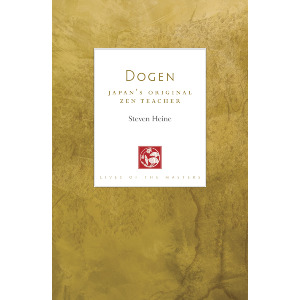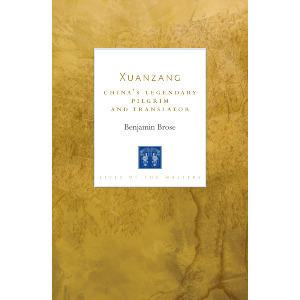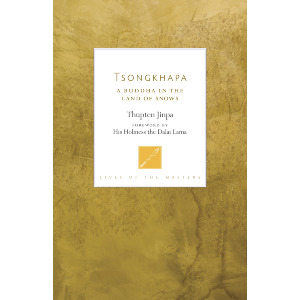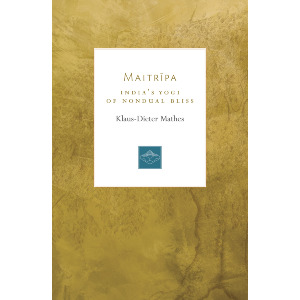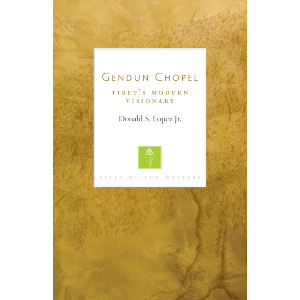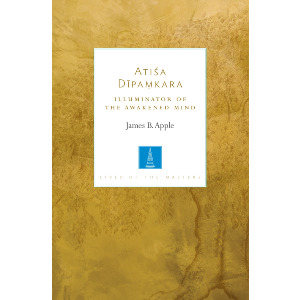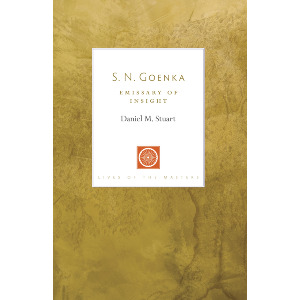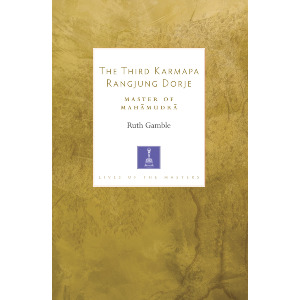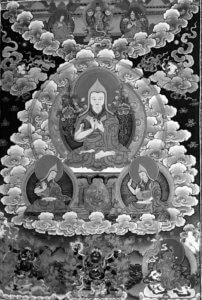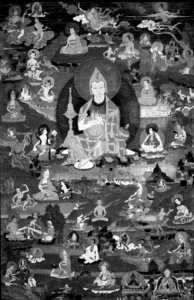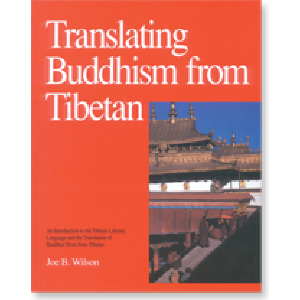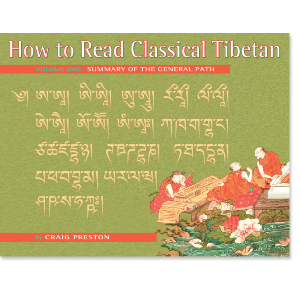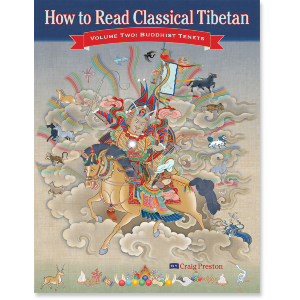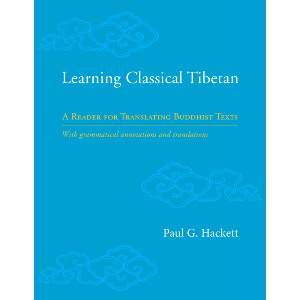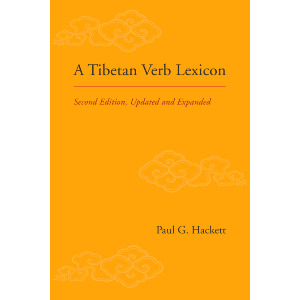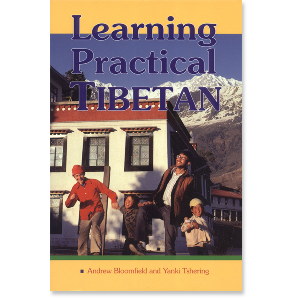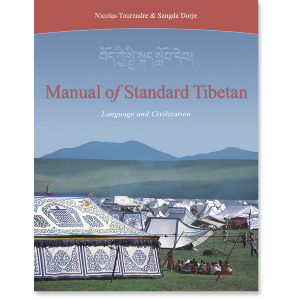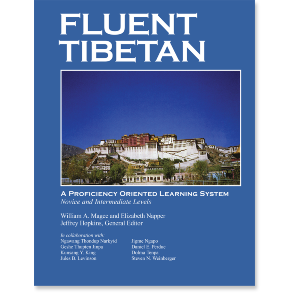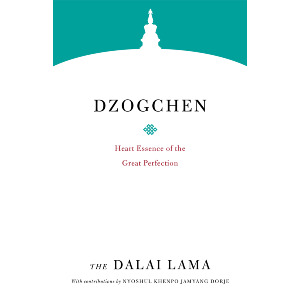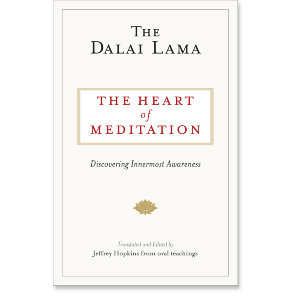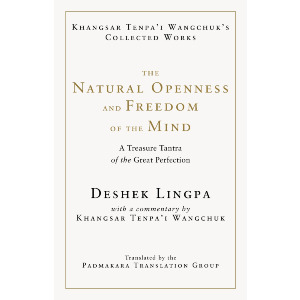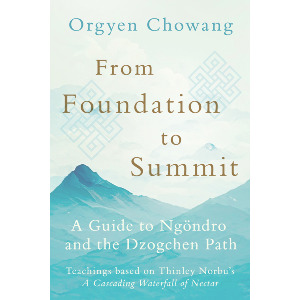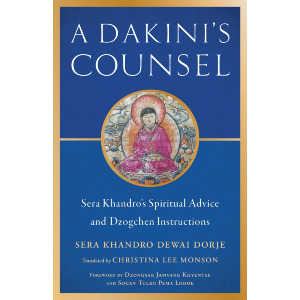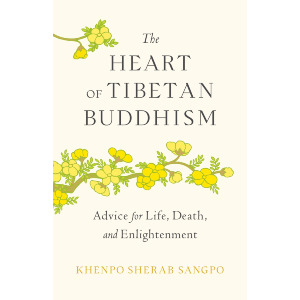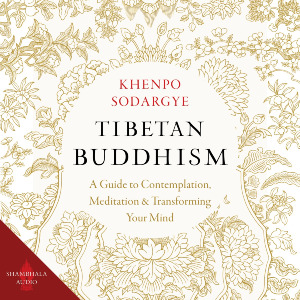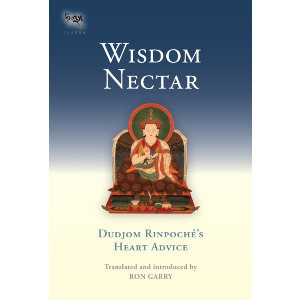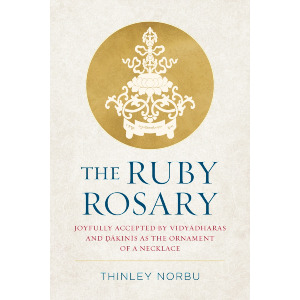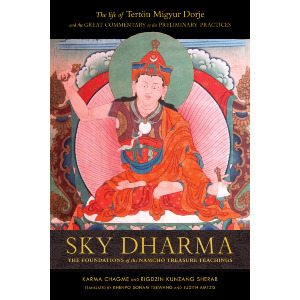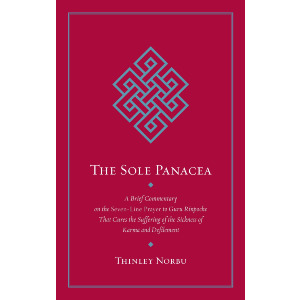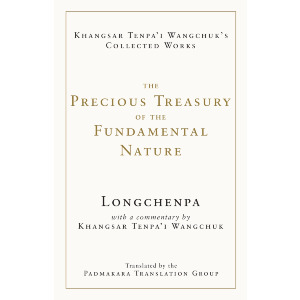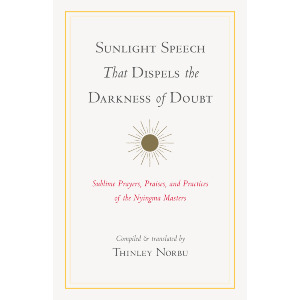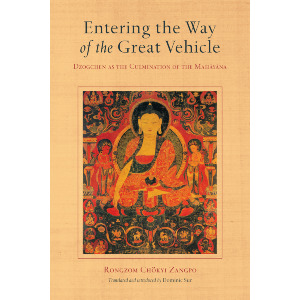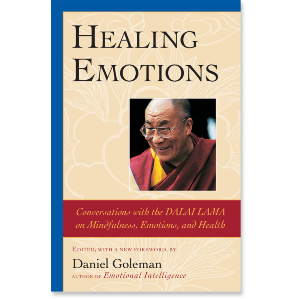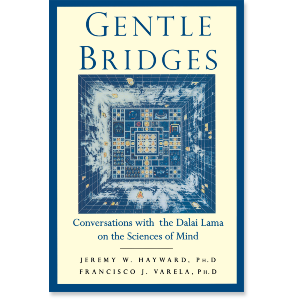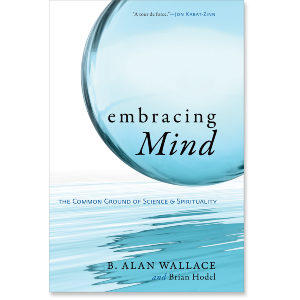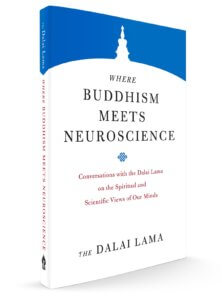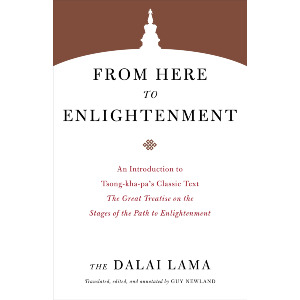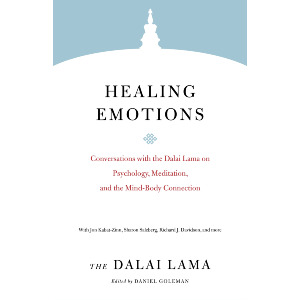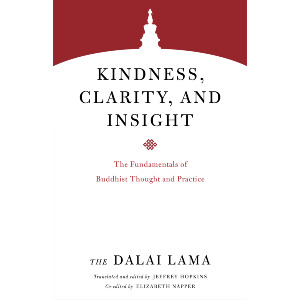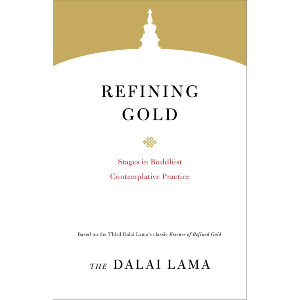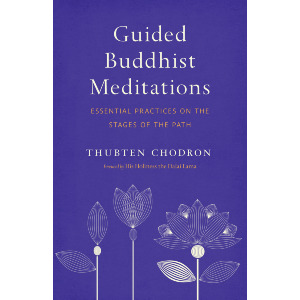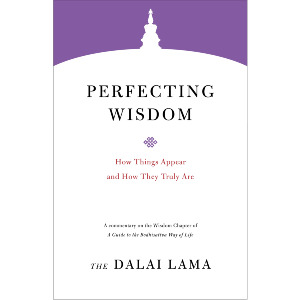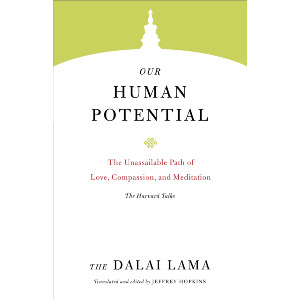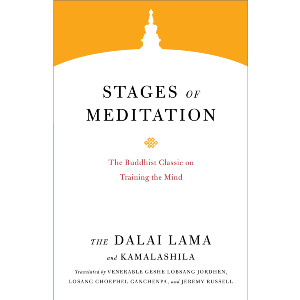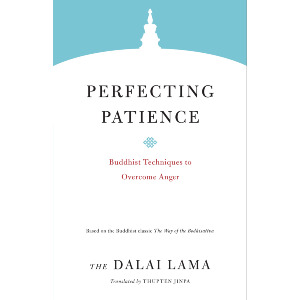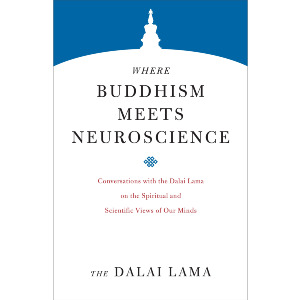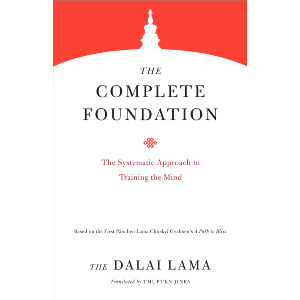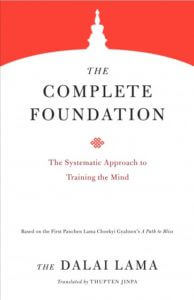Thupten Jinpa
Thupten Jinpa received his early education in the classical Tibetan system and holds a Lharam degree (the Tibetan equivalent to a doctorate in divinity) as well as a Ph.D. from Cambridge University, where he also worked as a research fellow at Girton College. He has been the principal English translator for the Dalai Lama since 1986. He is currently the president of the newly established Institute of Tibetan Classics dedicated to translating key Tibetan classics into contemporary languages. He lives in Montreal, Canada, with his wife and two young children.
Thupten Jinpa
-
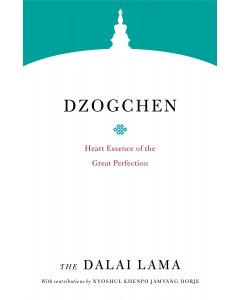 Dzogchen$21.95- Paperback
Dzogchen$21.95- PaperbackBy H.H. the Fourteenth Dalai Lama
By Nyoshul Khenpo
Translated by Thupten Jinpa
Translated by Richard Barron (Chokyi Nyima)
Edited by Patrick Gaffney -
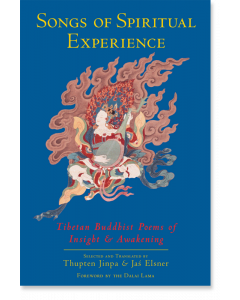 Songs of Spiritual Experience$22.95- Paperback
Songs of Spiritual Experience$22.95- PaperbackTranslated by Jas Elsner
Translated by Thupten Jinpa
Foreword by H.H. the Fourteenth Dalai Lama -
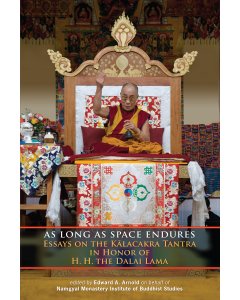 As Long as Space Endures$39.95- Paperback
As Long as Space Endures$39.95- PaperbackEdited by Edward A. Arnold
By Alexander Berzin
Foreword by Robert A. F. Thurman
By Giacomella Orofino
By Phillip Lesco
By Francesco Sferra
By Laura Harrington
By Gavin Kilty
By Miranda Shaw
By Glenn Wallis
By Vesna A. Wallace
By David B. Gray
By Urban Hammar
By Michael Sheehy
By Edward Henning
By Georgios T. Halkias
By David Reigle
By Thupten Jinpa
By Joe Loizzo
By Ivette Vargas
By William C. Bushell
By Sofia Stril-Rever
By Ronit Yoeli-Tlalim
By Geshe Drakpa Gelek
By Jhado Rinpoche -
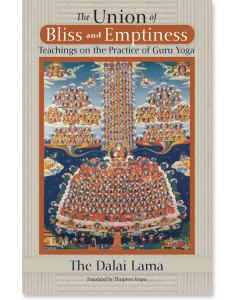 The Union of Bliss and Emptiness$19.95- Paperback
The Union of Bliss and Emptiness$19.95- PaperbackBy H.H. the Fourteenth Dalai Lama
Translated by Thupten Jinpa
- Buddhist Academic 1 item
- Buddhist Anthology 2item
- Buddhist Biography/Memoir 1 item
- Buddhist History 2item
- Buddhist Philosophy 1 item
- Dependent Origination 1 item
- Dalai Lamas 4item
- Dzogchen 1 item
- Gelug Tradition 3item
- Guru Yoga 1 item
- Jonang Tradition 1 item
- Kalachakra 1 item
- Nyingma Tradition 1 item
- Tantra 1 item
- Buddhist Poetry 1 item
GUIDES
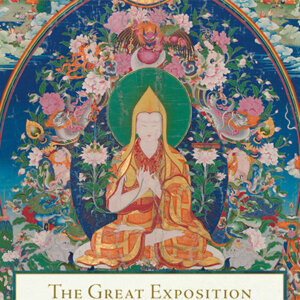
Tsongkhapa: A Guide to His Life and Works

The Life of Tsongkhapa Lobsang Drakpa (1357-1419)
Tsongkhapa Lobzang Drakpa (1357–1419), was one of the most important figures in Tibet, historically and philosophically. As the founder of the Gelug school he made an enormous contribution to revitalizing Buddhism in Tibet. Regarded as an emanation of Manjushri--the bodhisattva of wisdom and discerning intelligence, Tsongkhapa was of keen intellect as well as experiential understanding of the Buddhist tradition. He undertook many long retreats during which he had profound visions out of which he wrote many of his celebrated treatises including Lam Rim Chenmo or The Great Exposition of the Stages of the Path. A prolific writer, he composed 210 treatises, compiled into 20 volumes wherein he emphasized the combined paths of Sutra and Tanta. In addition, he established the acclaimed Ganden monastery.
For a longer biography of Tsongkhapa read an excerpt from Geshe Sonam Rinchen's commentary on The Three Principal Aspects of the Path.
"Born in 1357 in Amdo, northeastern Tibet, and educated in central Tibet, Tsongkhapa led a life that exemplified the importance of study, critical reflection, and meditative practice. In an autobiographical poem he declared:
"First I sought wide and extensive learning,
Second I perceived all teachings as personal instructions,
Finally, I engaged in meditative practice day and night;
All these I dedicated to the flourishing of the Buddha’s teaching.By the end of his life, 600 years ago, Tsongkhapa was widely revered across Tibet. He had studied and corresponded with the most renowned teachers of his time, from all the major traditions, and had spent years in meditative retreat."
—From the Foreward by H. H. The Dalai Lama, Tsongkhapa: A Buddha in the Land of Snows, by Thupten Jinpa
The Definitive Biography of Tsongkhapa
Paperback | Ebook
$29.95 - Paperback
Marking the 600th anniversary of Tsongkhapa, in 2019 we published what is the most comprehensive, definitive biography of this great figure, written by Thupten Jinpa. The author is best known as the main translator for the Dalai Lama, but he is an author and scholar himself, having earned a Geshe degree. In the author’s words,
this new biography of Tsongkhapa…is aimed primarily at the contemporary reader. And it seeks to answer the following key questions for them: ‘Who was or is Tsongkhapa? What is he to Tibetan Buddhism? How did he come to assume the deified status he continues to enjoy for the dominant Geluk School of Tibetan Buddhism? What relevance, if any, do Tsongkhapa’s thought and legacy have for our contemporary thought and culture?
—Thupten Jinpa, from the Introduction to Tsongkhapa: A Buddha in the Land of Snows
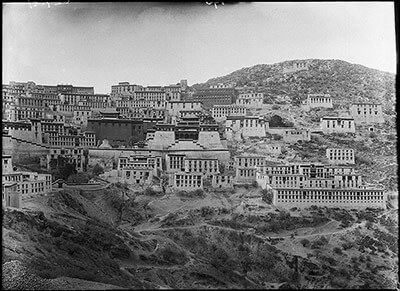
Ganden monastery, founded by Tsongkhapa, photographed in 1921 by Sir Charles Bell
Whoever sees or hears
Or contemplates these prayers,
May they never be discouraged
In seeking the bodhisattva’s amazing aspirations.
By praying with such expansive thought
Created from the power of pure intention,
May I achieve the perfection of prayers
And fulfill the wishes of all sentient beings.
Tsongkhapa's Lam Rim Chenmo, The Great Treatise on the Stages of the Path to Enlightenment
Tsongkhapa's main contribution to this genre is the famous Lamrim Chenmo or The Great Treatise on the Stages of the Path to Enlightenment. It is also generally considered his most influential work, studied and practiced by tens of thousands today.
The background to this work is on one of Tsongkhapa’s own letters to a lama, included in Art Engle's The Inner Science of Buddhist Practice, where he describes it as building on Atisha’s Lamp for the Path to Enlightenment:
“It is clear that this instruction [introduced] by [Atisha] Dīpaṃkara Śrījnāna on the stages of the path to enlightenment . . . teaches [the meanings contained in] all the canonical scriptures, their commentaries, and related instruction by combining them into a single graded path. One can see that when taught by a capable teacher and put into practice by able listeners it brings order, not just to some minor instruction, but to the entire [body of] canonical scriptures. Therefore, I have not taught a wide variety of [other] instructions.”
Paperback | Ebook
$19.95 - Paperback
The Great Treatise on the Stages of the Path to Enlightenment (Vol. 1-3)
The Great Treatise on the Stages of the Path to Enlightenment (Tib. Lam rim chen mo) is one of the brightest jewels in the world’s treasury of sacred literature. The author, Tsong-kha-pa, completed it in 1402, and it soon became one of the most renowned works of spiritual practice and philosophy in the world of Tibetan Buddhism. Because it condenses all the exoteric sūtra scriptures into a meditation manual that is easy to understand, scholars and practitioners rely on its authoritative presentation as a gateway that leads to a full understanding of the Buddha’s teachings.
Tsong-kha-pa took great pains to base his insights on classical Indian Buddhist literature, illustrating his points with classical citations as well as with sayings of the masters of the earlier Kadampa tradition. In this way the text demonstrates clearly how Tibetan Buddhism carefully preserved and developed the Indian Buddhist traditions.
Paperback| Ebook
$34.95 - Paperback
(Volume 1)
By Tsongkhapa
Edited by Joshua Cutler and Guy Newland, Translated by Lamrim Chenmo Translation Committee
This first of three volumes covers all the practices that are prerequisite for developing the spirit of enlightenment (bodhicitta).
Paperback| Ebook
$28.95 - Paperback
(Volume 2)
By Tsongkhapa
Edited by Joshua Cutler and Guy Newland, Translated by Lamrim Chenmo Translation Committee
This second of three volumes covers the deeds of the bodhisattvas, as well as how to train in the six perfections.
Paperback| Ebook
$34.95 - Paperback
(Volume 3)
By Tsongkhapa
Edited by Joshua Cutler and Guy Newland, Translated by Lamrim Chenmo Translation Committee
This third and final volume contains a presentation of the two most important topics in the work: meditative serenity (śamatha) and supramundane insight into the nature of reality (vipaśyanā).
Commentaries on Tsongkhapa's Great Treatise and other Lam Rim (Stages of the Path) texts
"The Great Treatise was written by Lama Tsong-kha-pa, a great scholar, a real holder of the Nalanda tradition. I think he is one of the very best Tibetan scholars. Although it is now widely available in Tibetan as well as English, you see that I brought with me today my own personal copy of this text. On March 17th, 1959, when I left Norbulingka that night, I brought this book with me. Since then I have used it ten or fifteen times to give teachings, all from this copy. So this is something very dear to me."
-H.H The Dalai Lama discussing his copy of the Great Treatise in From Here to Enlightenment
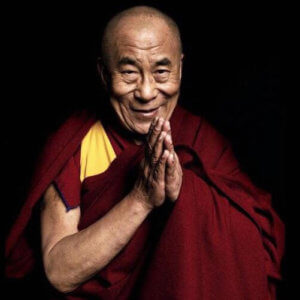
Paperback | Ebook
$19.95 - Paperback
From Here to Enlightenment
An Introduction to Tsong-kha-pa's Classic Text The Great Treatise on the Stages of the Path to Enlightenment
By H.H. The Dalai Lama and translated by Guy Newland
When the Dalai Lama was forced into exile in 1959, he could take only a few items with him. Among these cherished belongings was his copy of Tsong-kha-pa’s classic text The Great Treatise on the Stages of the Path to Enlightenment. This text distills all the essential points of Tibetan Buddhism, clearly unfolding the entire Buddhist path.
In 2008, celebrating the long-awaited completion of the English translation of the Great Treatise, the Dalai Lama gave a historic six-day teaching at Lehigh University to explain the meaning of the text and underscore its importance. It is the longest teaching he has ever given to Westerners on just one text—and the most comprehensive. From Here to Enlightenment makes the teachings from this momentous event available for a wider audience.
Paperback | Ebook
$21.95 - Paperback
Introduction to Emptiness
As Taught in Tsong-kha-pa's Great Treatise on the Stages of the Path
By Guy Newland
Readers are hard-pressed to find books that can help them understand the central concept in Mahayana Buddhism—the idea that ultimate reality is emptiness. In clear language, Introduction to Emptiness explains that emptiness is not a mystical sort of nothingness, but a specific truth that can and must be understood through calm and careful reflection. Newland's contemporary examples and vivid anecdotes will help readers understand this core concept as presented in one of the great classic texts of the Tibetan tradition, Tsong-kha-pa's Great Treatise on the Stages of the Path to Enlightenment. This new edition includes quintessential points for each chapter.
Paperback | Ebook
$17.95 - Paperback
Refining Gold
Stages in Buddhist Contemplative Practice
By H.H. The Dalai Lama
In this extensive teaching, the Dalai Lama beautifully elucidates the meaning of the path to enlightenment through his own direct spiritual advice and personal reflections. Based on two very famous Tibetan text—Tsongkhapa's Song of the Stages on the Spiritual Path and the Third Dalai Lama's Essence of Refined Gold—this teaching presents in practical terms the essential instructions for the attainment of enlightenment. Its direct approach and lucid style make Refining Gold one of the most accessible introductions to Tibetan Buddhism ever published. His discourse draws out the meaning of the Third Dalai Lama’s famous Essence of Refined Gold as he speaks directly to the reader, offering advice, personal reflections, and scriptural commentary. He says in practical terms what the student must do to attain enlightenment.
Tsongkhapa's Three Principle Aspects of the Path
This is the shortest Lamrim text Tsongkhapa composed. Tsongkhapa wrote the fourteen stanzas of this classic distillation of all the paths of practice that lead to enlightenment. The three principal elements of the path referred to are: (1) renunciation, tied to the wish for freedom from cyclic existence; (2) the motivation to attain enlightenment for the benefit of others; (3) cultivating the correct view that realizes emptiness.
Paperback | eBook
$21.95 - Paperback
Three Principal Aspects of the Path
By Geshe Sonam Rinchen, edited and translated by Ruth Sonam
The wish for freedom, the altruistic intention, and the wisdom realizing emptiness constitute the essence of the Buddhist path. In this teaching, Geshe Sonam Rinchen explains, in clear and readily accessible terms, Je Tsongkhapa’s (1357–1419) famed presentation of these three essential topics.
The Three Principal Aspects is also included in Cutting Through Appearances: Practice and Theory of Tibetan Buddhism in which Geshe Sopa annotates the Fourth Panchen Lama’s instructions on how to practice this text in a meditation session.
His Holiness the Dalai Lama teaches on this text, and this is included as the chapter “The Path to Enlightenment” in Kindness, Clarity, and Insight.
Paperback | Ebook
$39.95 - Paperback
Paperback | Ebook
$16.95 - Paperback
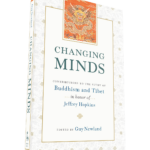
Paperback | eBook
$29.95 - Paperback
Another work where Tsongkhapa’s Lamrim is featured is in Changing Minds: Contributions to the Study of Buddhism and Tibet in Honor of Jeffrey Hopkins. There are three chapters devoted to Tsongkhapa:
- Guy Newland’s Ask a Farmer: Ultimate Analysis and Conventional Existence in Tsongkhapa’s Lam Rim Chen Mo
- Daniel Cozort’s Cutting the Roots of Virtue: Tsongkhapa on the Results of Anger
- Elizabeth Napper’s Ethics as the Basis of a Tantric Tradition: Tsongkhapa and the Founding of the Gelugpa Order
Lotsawa House also includes a translation of these fourteen stanzas.
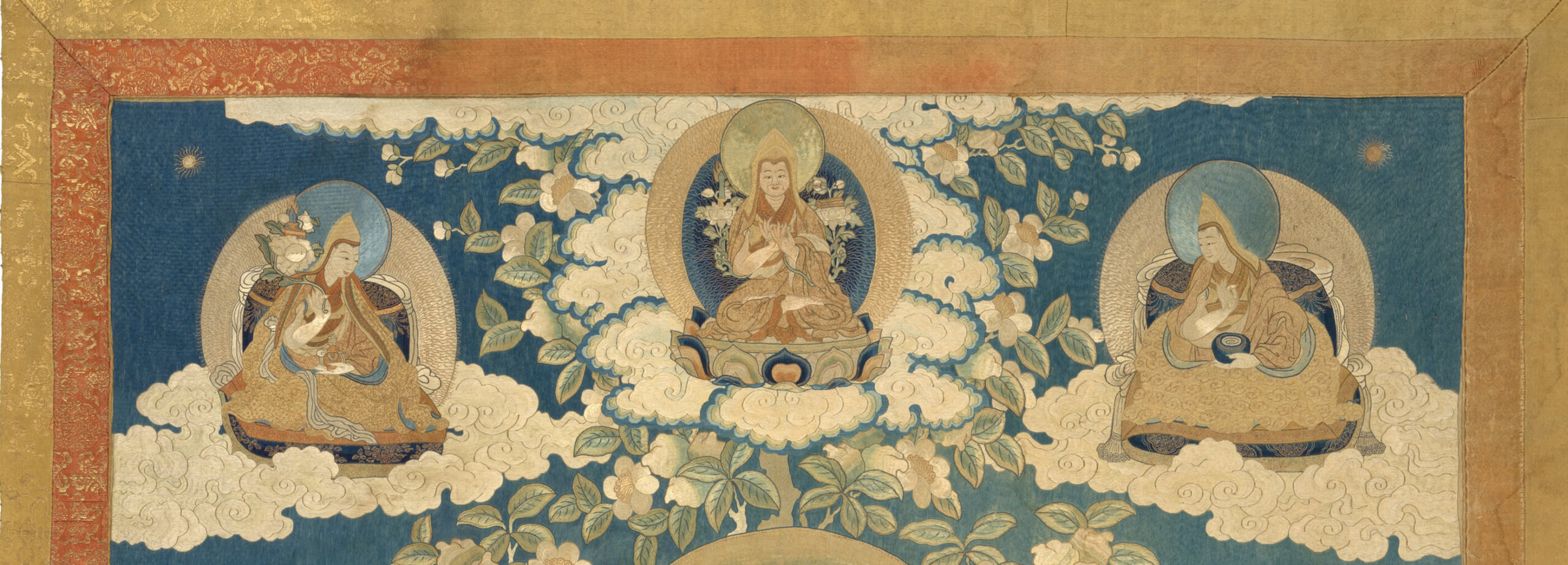
Tsongkhapa on Madhyamaka, The Middle Way School
Tsongkhapa is known for his distinct approach to the middle way philosophical system (madhyamaka) propounded by Indian masters Nāgārjuna (circa 200 CE) and Candrakīrti (circa 600 CE).
"I first went to India in 1972 on a dissertation research Fulbright fellow-ship, where although advised by the Fulbright Commission in New Delhi not to go to Dharmsala because of possible political complications, I went after a brief trip to Banaras. There I found that the Dalai Lama was about to begin a sixteen-day series of four- to six-hour lectures on Tsong-kha-pa Lo-sang-drak-pa’s Medium-Length Exposition of the Stages of the Path to Enlightenment Practiced by Persons of Three Capacities. Despite my cynicism that a governmentally appointed reincarnation could possibly have much to offer, I slowly became fascinated first with the strength and speed of his articulation and then, much more so, with the touching meanings that were conveyed."
-Jeffrey Hopkins, from the Preface to Tsong-kha-pa's Final Exposition of Wisdom

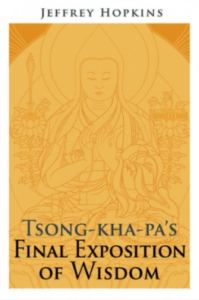
Paperback | eBook
$44.95 - Paperback
Tsong-kha-pa's Final Exposition of Wisdom
By Jeffrey Hopkins
In fourteenth- and fifteenth-century Tibet there was great ferment about what makes enlightenment possible, since systems of self-liberation must show what factors pre-exist in the mind that allow for transformation into a state of freedom from suffering. This controversy about the nature of mind, which persists to the present day, raises many questions. This book first presents the final exposition of special insight by Tsong-kha-pa, the founder of the Ge-luk-pa order of Tibetan Buddhism, in his medium-length Exposition of the Stages of the Path as well as the sections on the object of negation and on the two truths in his Illumination of the Thought: Extensive Explanation of Chandrakirti's Supplement to Nagarjuna's "Treatise on the Middle." It then details the views of his predecessor Dol-po-pa Shay-rap Gyel-tsen, the seminal author of philosophical treatises of the Jo-nang-pa order, as found in his Mountain Doctrine, followed by an analysis of Tsong-kha-pa's reactions. By contrasting the two systems—Dol-po-pa's doctrine of other-emptiness and Tsong-kha-pa's doctrine of self-emptiness—both views emerge more clearly, contributing to a fuller picture of reality as viewed in Tibetan Buddhism. Tsong-kha-pa's Final Exposition of Wisdom brilliantly explicates ignorance and wisdom, explains the relationship between dependent-arising and emptiness, shows how to meditate on emptiness, and explains what it means to view phenomena as like illusions.
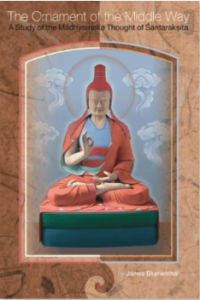
Paperback
$34.95 - Paperback
The Ornament of the Middle Way
A Study of the Madhyamaka Thought of Santaraksita
By James Blumenthal
The late James Blumenthal explores this important text by Shantarakshita and brings in Tsongkhapa’s text on this subject.
Shantarakshita's The Ornament of the Middle Way is among the most important Mahayana Buddhist philosophical treatises to emerge on the Indian subcontinent. In many respects, it represents the culmination of more than 1300 years of philosophical dialogue and inquiry since the time of the historical Buddha Shakyamuni. Shantarakshita set forth the foundation of a syncretic approach to contemporary ideas by synthesizing the three major trends in Indian Buddhist thought at the time (the Madhyamaka thought of Nagarjuna, the Yogachara thought of Asanga, and the logical and epistemological thought of Dharmakirti) into one consistent and coherent system. Shantarakshitas's text is considered to be the quintessential exposition or root text of the school of Buddhist philosophical thought known in Tibet as Yogachara-Svatantrika-Madhyamaka. In addition to examining his ideas in their Indian context, this study examines the way Shantarakshita's ideas have been understood by and have been an influence on Tibetan Buddhist traditions. Specifically, Blumenthal examines the way scholars from the Geluk School of Tibetan Buddhism have interpreted, represented, and incorporated Santaraksita's ideas into their own philosophical project. This is the first book-length study of the Madyamaka thought of Shantarakshita in any Western language. It includes a new translation of Shantarakshita's treatise, extensive extracts from his autocommentary, and the first complete translation of the primary Geluk commentary on Shantarakshita's treatise.
"As a religious reformer, he has been likened to Luther by Western Buddhologists; but as a religious scholar he is regarded in his own culture as a genius whose statue more closely parallels that of Aquinas in Western Christianity. For Tsongkhapa created his own unique interpretation of Buddhist systematics and hermeneutics, in which he synthesized themes from all the Tibetan Buddhist traditions of his era. For these reasons he was praised by the Eight Karmapa as Tibet's chief exponent of ultimate truth, who revived the Buddha's doctrine at a time when the teachings of all four major Tibetan Buddhist lineages were in decline."
-B. Alan Wallace, from the Preface to Balancing the Mind
Paperback | eBook
$24.95 - Paperback
Balancing the Mind
A Tibetan Buddhist Approach to Refining Attention
By B. Alan Wallace
For centuries, Tibetan Buddhist contemplatives have directly explored consciousness through carefully honed and rigorous techniques of meditation. B. Alan Wallace explains the methods and experiences of Tibetan practitioners and compares these with investigations of consciousness by Western scientists and philosophers. Balancing the Mind includes a translation of the classic discussion of methods for developing exceptionally high degrees of attentional stability and clarity by fifteenth-century Tibetan contemplative Tsongkhapa.
Tsongkhapa and the Debate over the Two Truths
Tsongkhapa is famous—and in some circles controversial—for his presentation and positioning of the Prasangika view of Madhyamaka. Any discussion or debate of this subject invariably references Tsongkhapa.
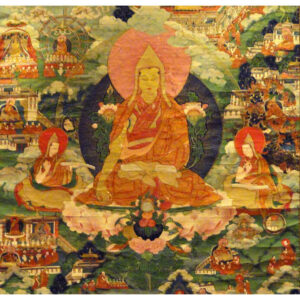
Hardcover | eBook
$78.00 - Hardcover
The Center of a Sunlight Sky
Madhyamaka in the Kagyu Tradition
By Karl Brunnhölzl
This comprehensive work by Karl Brunnholzl explores all facets of Madhyamaka in the Kagyu tradition, but no analysis of Madhyamaka can leave out Tsongkhapa who appears throughout this work. There is a sixty-page section comparing the views of Tsongkhapa to those of Mikyo Dorje’s “whose writing, not only is a reaction to the position of Tsongkhapa and his followers but addresses most of the views on Madhyamaka that were current in Tibet at the time, including the controversial issue of ‘Shentong-Madhyamaka.’”
Paperback| eBook
$39.95 - Paperback
The Adornment of the Middle Way
Shantarakshita's Madhyamakalankara with Commentary by Jamgon Mipham
By Jamgon Mipham, translated by Padmakara Translation Group
For a different take on Shantarakshita's The Ornament of the Middle Way (same text, differently translated title) The Adornment of the Middle Way translated by the Padmakara Translation Group, gives a helpful introduction on the various interpretations. This longer passage offers a glimpse into some of the fault lines in the debate:
"The brilliance of Tsongkhapa’s teaching, his qualities as a leader, his emphasis on monastic discipline, and the purity of his example attracted an immense following. Admiration, however, was not unanimous, and his presentation of Madhyamaka in particular provoked a fierce backlash, mainly from the Sakya school, to which Tsongkhapa and his early disciples originally belonged. These critics included Tsongkhapa’s contemporaries Rongtön Shakya Gyaltsen (1367–1449) and Taktsang Lotsawa (1405–?), followed in the next two generations by Gorampa Sonam Senge (1429–1487), Serdog Panchen Shakya Chokden (1428–1509), and the eighth Karmapa, Mikyö Dorje (1505–1557). All of them rejected Tsongkhapa’s interpretation as inadequate, newfangled, and unsupported by tradition. Although they recognized certain differences between the Prasangika and Svatantrika approaches, they considered that Tsongkhapa had greatly exaggerated the divergence of view. They believed that the difference between the two subschools was largely a question of methodology and did not amount to a disagreement on ontological matters.
Not surprisingly, these objections provoked a counterattack, and they were vigorously refuted by Tsongkhapa’s disciples. In due course, however, the most effective means of silencing such criticisms came with the ideological proscriptions imposed at the beginning of the seventeenth century. These followed the military intervention of Gusri Khan, who put an end to the civil war in central Tibet, placed temporal authority in the hands of the Fifth Dalai Lama, and ensured the rise to political power of the Gelugpa school. Subsequently, the writings of all the most strident of Tsongkhapa’s critics ceased to be available and were almost lost. It was, for example, only at the beginning of the twentieth century that Gorampa’s works could be fully reassembled, whereas Shakya Chokden’s works, long thought to be irretrievably lost, were discovered only recently in Bhutan and published as late as 1975."
-from the Introduction to The Adornment of the Middle Way
The Wisdom Chapter
Jamgön Mipham's Commentary on the Ninth Chapter of The Way of the Bodhisattva
By Jamgon Mipham, translated by Padmakara Translation Group
This work on the Wisdom Chapter of Shantideva’s classic, written more than four centuries after Tsongkhapa, is a presentation of a different view than that expounded by Tsongkhapa. It is, in fact, a superb source for understanding the impact of his Madhyamaka presentation in a wider context, historically and philosophically. The extensive introduction gives a very complete and comprehensive account. In sum:
"In his treatment of the Gelugpa account, Mipham concurs in all important respects with Gorampa and the rest of Tsongkhapa’s earlier critics. Indeed, his critique is possibly even more effective in being expressed moderately and without vituperation. Nevertheless, he is careful never to attack Tsongkhapa personally. Given the fact that Mipham was a convinced upholder of the nonsectarian movement, there is no reason to doubt the sincerity of the humble and respectful manner with which he invariably refers to Tsongkhapa. No sarcasm is detectable in his words:
In the snowy land of Tibet, the great and venerable lord Tsongkhapa was unrivaled in his activities for the sake of the Buddha’s teaching. And with regard to his writings, which are clear and excellently composed, I do indeed feel the greatest respect and gratitude.
There is, however, a striking contrast between Mipham’s veneration of Tsongkhapa, on the one hand, and his penetrating critique of his view, on the other. Mipham’s assessment seems to oscillate between an approbation of some of Tsongkhapa’s positions, regarded as unproblematic expressions of a Svātantrika approach that Mipham valued, and a determination to demolish Tsongkhapa’s philosophical innovations and their pretended Prāsaṅgika affiliations. This discrepancy has led some scholars to accuse Mipham of inconsistency. Closer scrutiny suggests, however, that Mipham’s admittedly complex attitude to Tsongkhapa was in point of fact quite coherent."
-from the Introduction to The Wisdom Chapter
Tsongkhapa's Poetry and Songs of Realization
Paperback
$22.95 - Paperback
Thupten Jinpa’s collection of Tibetan poetry includes two poems by Tsongkhapa including Reflections on Emptiness, which is extracted from a larger work, the rTag tu ngu’i rtogs brjod—a poetic retelling of the story of the bodhisattva Sadāprarudita, who is associated with the 8,000 Verse Prajnamaramita Sutra and A Prayer for the Flourishing of Virtues.
Jinpa presents Tsongkhapa’s poetry first in terms of his mastery of composition and second, in terms of his mastery of the Buddhist path.
First, describing his master of composition, Jinpa writes:
Tsongkhapa’s famous long poem entitled ‘‘A Literary Gem of Poetry’’ uses a single vowel in every stanza throughout the entire length. This is the poem from which come the famous lines:
Good and evil are but states of the heart:
When the heart is pure, all things are pure;
When the heart is tainted, all things are tainted.
So all things depend on your heart.In the original Tibetan, this stanza uses only the vowel a. Of course, this kind of literary device can never be reproduced in a translation, whatever the virtuosity and command of the translator.
Second, describing his mastery of the Buddhist path Jinpa states:
To a contemporary reader, Tsongkhapa’s famous ‘‘Prayer for the Flourishing of Virtues’’ gives an insight into the deepest ideals of a dedicated Tibetan Buddhist practitioner; it presents a map of progressive development on the path. Beyond this, the mystic must utterly transform the very root of his identity and the perceptions that arise from it. From the ordinary patterns of action and reaction that make up our psyche and emotional life, the meditator must move toward a divine state of altered consciousness where all realities, including one’s own self, are manifested in their enlightened forms. In other words, the meditator must perfect all dimensions of his or her identity and experience, including rationality, emotion, intuition, and even sexuality. This, in Tibetan Buddhism, is the mystical realm of tantra.
Tsongkhapa and Tantra
A brief note. For those unfamiliar or only exposed through books, we strongly encourage readers to study tantra under the guidance of a qualified teacher. Book reading can only take you so far as the transmission of tantric teaching is about more than what can be put on paper.
This work is analogous to the tantra version of the Lamrim Chenmo, presenting tantra from the position of the sarma, ie., the 'new school,' or later transmission from India.
There are three books by Tsongkhapa and His Holiness the Dalai Lama that form a series focused on Tsongkhapa's Great Exposition of Secret Mantra. In this text, Tsongkhapa presents the differences between sutra and tantra and the main features of various systems of tantra. Each of the three books below begins with the Dalai Lama contextualizing and commenting on the points presented in Tsongkhapa's text, followed by a translation of the corresponding part of the text itself.
Paperback
$29.95 - Paperback
In Volume 1: Tantra in Tibet, the foundations of motivation, refuge, and the Hinayana and Mahayana paths are presented. He then gives an overview of tantra, the notion of Clear Light, the greatness of mantra, and initiation or empowerment.
This revised work describes the differences between the Great Vehicle and Lesser Vehicle streams in the sutra tradition, and between the sutra tradition and that of tantra generally. It includes highly practical and compassionate explanations from H.H. the Dalai Lama on tantra for spiritual development; the first part of the classic Great Exposition of Secret Mantra text; and a supplement by Jeffrey Hopkins on the difference between the Vehicles, emptiness, psychological transformation, and the purpose of the four tantras.
Paperback
$29.95 - Paperback
In Volume II: Deity Yoga, His Holiness discusses deity yoga at length with a particular focus on action and performance tantras (the first two categories of tantra as described in the sarma, or “new translation” schools).
This revised work describes the profound process of meditation in Action (kriya) and Performance (carya) Tantras. Invaluable for anyone who is practicing or is interested in Buddhist tantra, this volume includes a lucid exposition of the meditative techniques of deity yoga from H.H. the Dalai Lama; the second and third chapters of the classic Great Exposition of Secret Mantra text; and a supplement by Jeffrey Hopkins outlining the structure of Action Tantra practices as well as the need for the development of special yogic powers.
Paperback
$27.95 - Paperback
in Volume III: Yoga Tantra the Dalai Lama details the practice of the next level of tantra, yoga tantra. With a preliminary overview of the motivation, His Holiness explains this level, which focuses on internal yoga, which here means the union of deity yoga with the wisdom of realizing emptiness. He details the yoga, both that with and that without signs, and then briefly explains how gaining stability in these practices is the foundation for some other practices that lead to mundane and extraordinary “feats.”
This work opens with the Dalai Lama presenting the key features of Yoga Tantra then continues with the root text by Tsongkhapa. This is followed by an overview of the central practices by Khaydrub Je. Jeffrey Hopkins concludes the volume with an outline of the steps of Yoga Tantra practice, which is drawn from the Dalai Lama’s, Tsongkhapa’s, and Khaydrub Je’s explanations.
An explanation of the highest yoga tantra is not included in these works, but an excellent resource is Daniel Cozort's Highest Yoga Tantra.
Paperback
$39.95 - Paperback
The Six Yogas of Naropa
Tsongkhapa's Commentary
By Glenn H. Mullin
Tsongkhapa's commentary entitled A Book of Three Inspirations: A Treatise on the Stages of Training in the Profound Path of Naro's Six Dharmas is commonly referred to as The Three Inspirations. Anyone who has read more than a few books on Tibetan Buddhism will have encountered references to the Six Yogas of Naropa, a preeminent yogic technology system. The six practices—inner heat, illusory body, clear light, consciousness transference, forceful projection, and bardo yoga—gradually came to pervade thousands of monasteries, nunneries, and hermitages throughout Central Asia over the past five and a half centuries.
Paperback
$27.95 - Paperback
The Practice of the Six Yogas of Naropa
By Glenn H. Mullin
Another text that is included in Tsongkhapa’s collected works is the short Practice Manual on the Six Yogas. This is included in the wider collection of texts on this practice titled The Practice of the Six Yogas of Naropa. Also included in this book are works by Tilopa, Naropa, Je Sherab Gyatso, and the First Panchen Lama.
From the Six Yogas of Naropa:
"Tsongkhapa's treatise on this system of tantric practice ... became the standard guide to the Naropa tradition at Ganden Monastery, the seat he founded near Lhasa in 1409. Ganden was to become the motherhouse of the Gelukpa school, and thus the symbolic head of the network of thousands of Gelukpa monasteries that sprang up over the succeeding centuries across Central Asia, from Siberia to northern India. A Book of Three Inspirations has served as the fundamental guide to Naropa's Six Yogas for the tens of thousands of Gelukpa monks, nuns, and lay practitioners throughout that vast area who were interested in pursuing the Naropa tradition as a personal tantric study. It has performed that function for almost six centuries now.
Tsongkhapa the Great's A Book of Three Inspirations has for centuries been regarded as special among the many. The text occupies a unique place in Tibetan tantric literature, for it in turn came to serve as the basis of hundreds of later treatments. His observations on various dimensions and implications of the Six Yogas became a launching pad for hundreds of later yogic writers, opening up new horizons on the practice and philosophy of the system. In particular, his work is treasured for its panoramic view of the Six Yogas, discussing each of the topics in relation to the bigger picture of tantric Buddhism, tracing each of the yogic practices to its source in an original tantra spoken by the Buddha, and presenting each within the context of the whole. His treatise is especially revered for the manner in which it discusses the first of the Six Yogas, that of the 'inner heat.' As His Holiness the present Dalai Lama put it at a public reading of and discourse upon the text in Dharamsala, India, in 1991, 'the work is regarded by Tibetans as tummo gyi gyalpo, the king of treatments on the inner heat yoga.' Few other Tibetan treatises match it in this respect."
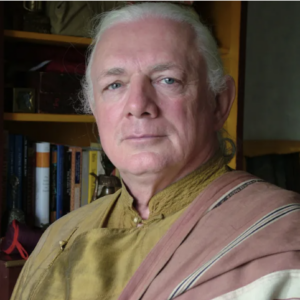
Paperback | eBook
$39.95 - Paperback
This work has three main sections: an overview of Mahamudra, the First Panchen’s text The Main Road of the Triumphant Ones, and a commentary by the Dalai Lama. The author contextualizes the selection saying that the tradition of Mahamudra in the Gelug tradition comes through Tsongkhapa.
Other Notable Works Related to Tsongkhapa
Paperback | eBook
$39.95 - Paperback
Tibetan Literature
Studies in Genre
Edited by Jose Cabezon and Roger R. Jackson
Tibetan Literature: Studies in Genre is a collection by leading Tibetologists. The immensity of Tibet's literary heritage, unsurprisingly, is filled with references to Tsongkhapa across a wide range of subjects. Just a sampling of them include: the establishment of the Gelug order; the monastic curriculum; debate manuals; establishment of Ganden; a comparison with Milarepa; the controversies about his views; a classification of his texts; and a lot more.
Paperback | eBook
$29.95 - Paperback
Mind in Tibetan Buddhism
By Lati Rinpoche, Edited and translated by Elizabeth Napper
Mind in Tibetan Buddhism is an oral commentary on Geshe Jampel Sampel's Presentation of Awareness and Knowledge Composite of All the Important Points, Opener of the Eye of New Intelligence. This topic, lorig in Tibetan, was not one on which Tsongkhapa wrote a dedicated text, but he does include it in an introduction to Dharmakirti’s Seven Treatises and one of his sections includes a brief presentation on lorig. Tsongkhapa is brought up throughout this book.
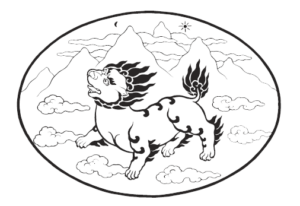
Tsongkhapa is also referenced in about 60 articles on shambhala.com, mostly from the Snow Lion newsletter archive.
Additional Resources


More can be found on Atisha's life on Treasury of Lives
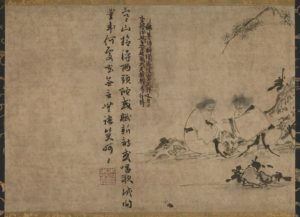
Buddhist Poetry - A Reader Guide

A Reader Guide
Jump to sections on this page:
Recent Releases | Chan and Zen Poetry | Indian Poetry | Tibetan Poetry | Southeast Asian Poetry | Contemporary Buddhist Poetry
Recent Releases
Until Nirvana's Time: Buddhist Songs from Cambodia
By Trent Walker
Until Nirvana’s Time presents forty-five Dharma songs, whose soaring melodies have inspired Cambodian Buddhist communities for generations. Whether recited in daily prayers or all-night rituals, these poems speak to our deepest concerns—how to die, how to grieve, and how to repay the ones we love.
Introduced, translated, and contextualized by scholar and vocalist Trent Walker, this is the first collection of traditional Cambodian Buddhist literature available in English. Many of the poems have been transcribed from old cassette tapes or fragile bark-paper manuscripts that have never before been printed. A link to recordings of selected songs in English and Khmer accompanies the book.
Click here to listen to songs from the book, performed by Trent Walker.
Chan and Zen Poetry
The Poetry of Zen, edited by Sam Hamill & J.P. Seaton
Here, poet-translators Sam Hamill and J.P. Seaton offer up a rich sampling of poems from the Chinese and Japanese Zen traditions, spanning centuries of poets, from Lao Tzu to Kobayashi Issa. While a few of the poets included were not Zen practitioners, their poems nonetheless illustrate a strong Zen influence. Hamill and Seaton open the anthology with an overview of the Zen poetic tradition, and provide historical, philosophical, and biographical context to the works throughout, showing readers how poetry “is one of the many paths to enlightenment” (7). With a compact trim size, this collection makes a wonderful travel companion.
Poetry from Chinese Chan Masters
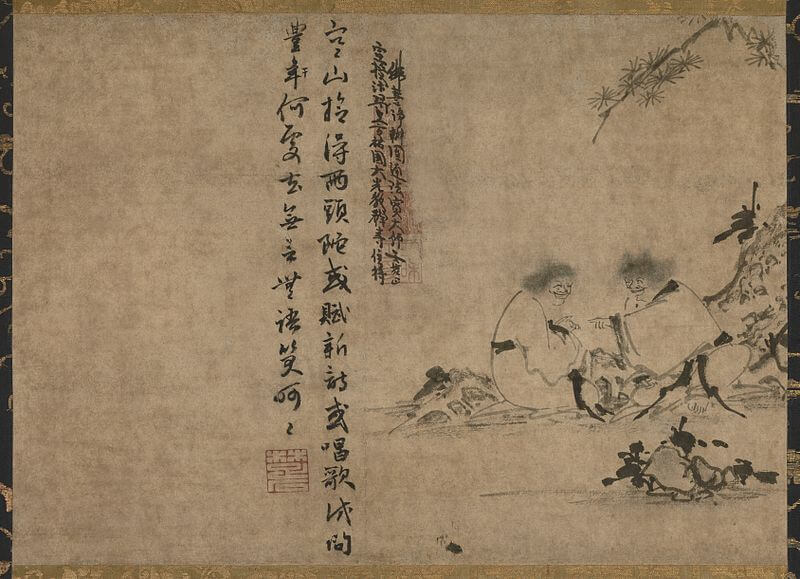
By Indara (因陀羅) (Yintuoluo) (Emuseum) [Public domain or Public domain], via Wikimedia Commons
The Poetry of Enlightenment: Poems by Ancient Chan Masters, by Chan Master Sheng Yen
Look inside the minds of enlightened masters with this collection of Ch’an teaching poems. Chan Master Sheng Yen offers commentary on ten poems by ancient Chinese Ch’an masters, selected both for their simplicity of language and depth of meaning. Written by Ch’an practitioners post-enlightenment, these poems touch on the experience of Ch’an, how to practice, cultivating the right attitude, and obstacles to avoid, as well as offering a glimpse into the state of mind of enlightenment.
The Complete Cold Mountain: Poems of the Legendary Hermit Hanshan, translated by Kazuaki Tanahashi & Peter Levitt
Capturing readers with its insightful, light, humorous, and often rebellious spirit, Hanshan’s Cold Mountain poems have long been enjoyed by Buddhists and non-Buddhists alike. This new translation of these centuries-old writings by Kaz Tanahashi and Peter Levitt presents readers not only the full body of poems in its entirety, but also provides a wealth of insight into the poets behind the poems, full Chinese text of the poems, historical context, and the Buddhist elements present throughout the collection. The translators’ deep appreciation for Hanshan shines through the collection. Translator Peter Levitt notes in the introduction, “Because of the compassionate discernment, profound tranquility, unexpected insight, and the occasional outrageous humor of his poetry, Kaz Tanahashi and I have gratefully considered Hanshan one of life’s treasured companions for fifty years. As a result of the kinship we feel with him, we gathered together, translated, and now offer readers the most complete version of the poet’s work to date in the English language” (2).
Poetry from Japanese Zen Masters
The Poetry of Ryokan
Widely admired both for his character and poetry, Ryokan remains one of the key poets of the Zen tradition. Though written in eighteenth century Japan, Ryokan’s poems seem to transcend time and space, with reflections on the human experience that are as relevant to today’s readers as they were centuries ago.
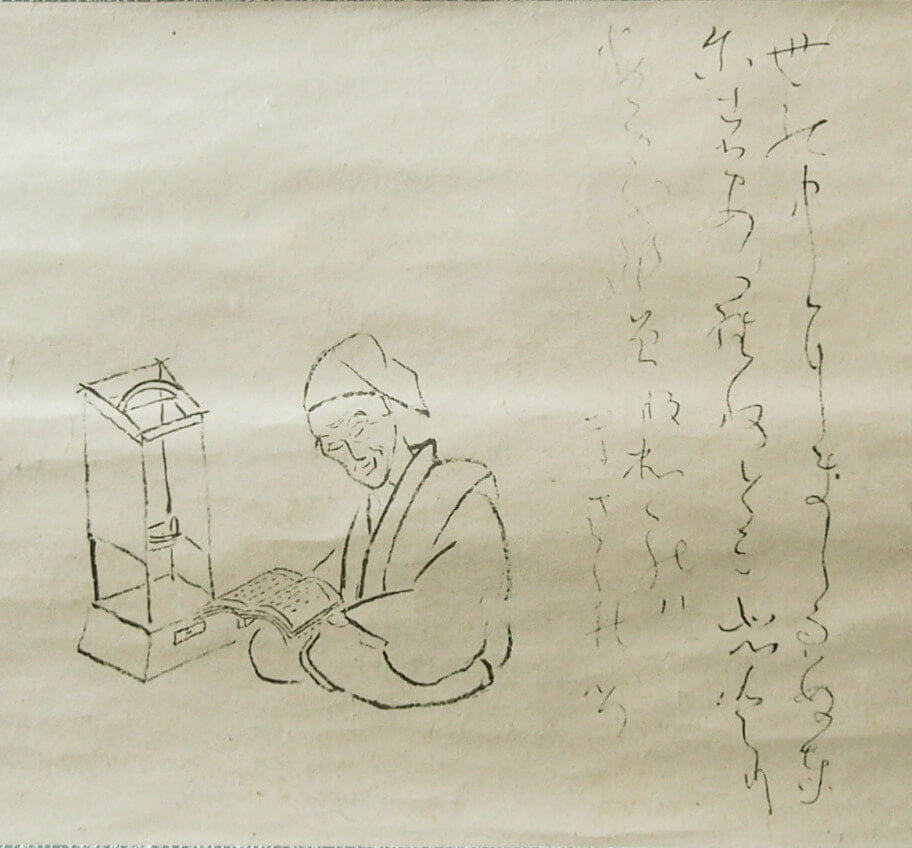
“Who says my poems are poems?
My poems are not poems.
When you know that my poems are not poems,
Then we can speak of poetry!”
*Image by Ryōkan (English: Replica before 1970) [Public domain], via Wikimedia Commons
$18.95 - Paperback
Dewdrops on a Lotus Leaf: Zen Poems of Ryokan, translated & edited by John Stevens
Providing brief biographical context, John Stevens introduces us to the world and work of Ryokan. The collection demonstrates the spirit of Ryokan’s Zen outlook, with poems covering the full spectrum of the human experience and focusing on “things deep inside the heart.” Throughout the text are ink paintings by Koshi no Sengai, a devotee of Ryokan, many of which include calligraphy of Ryokan’s verses.
$19.95 - Paperback
One Robe, One Bowl: The Zen Poetry of Ryokan, translated & introduced by John Stevens
In comparison to Dewdrops, this collection offers a more detailed introduction to the life of Ryokan and his relationship to Zen Buddhism. Ryokan was not married to one poetic style, and thus this collection is broken up into classical Chinese style poems, and Japanese waka and haiku, organized by season.
$18.95 - Paperback
Sky Above, Great Wind: The Life and Poetry of Zen Master Ryokan, translated by Kazuaki Tanahashi
For readers who want to take a really deep dive into Ryokan, this is the collection to read. Not only does Tanahashi present Ryokan’s poetry (organized chronologically), but he also offers selections of Ryokan’s calligraphy, maps of relevant sites for readers’ reference, a detailed biographical introduction, notes on individual poems, an analysis of Ryokan’s poetic forms, and a collection of anecdotes about the beloved Zen poet.
The Poetry of Saigō
Saigyō, the Buddhist name of Fujiwara no Norikiyo (1118–1190), is one of Japan’s most famous and beloved poets. He was a recluse monk who spent much of his life wandering and seeking after the Buddhist way. Combining his love of poetry with his spiritual evolution, he produced beautiful, lyrical lines infused with a Buddhist perception of the world.
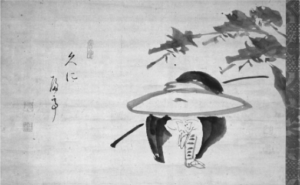
This world—
strug jewels
of dew
on the frail thread
a spider spins.
Gazing at the Moon: Buddhist Poems of Solitude, translated by Meredith McKinney, presents over one hundred of Saigyō’s tanka—traditional 31-syllable poems—newly rendered into English by renowned translator Meredith McKinney. This selection of poems conveys Saigyō’s story of Buddhist awakening, reclusion, seeking, enlightenment, and death, embodying the Japanese aesthetic ideal of mono no aware—to be moved by sorrow in witnessing the ephemeral world.
Check out the interview with Meredith McKinney on the Books on Asia Podcast!
Indian Buddhist Poetry
Songs of the Sons and Daughters of Buddha: Enlightenment Poems from the Theragatha and Therigatha, translated by Andrew Schelling and Anne Waldman
More than two thousand years ago, the earliest disciples of the Buddha put into verse their experiences on the spiritual journey—from their daily struggles to their spiritual realizations. Over time the verses were collected to form the Theragatha and Therigatha, the “Verses of Elder Monks” and “Verses of Elder Nuns” respectively. Renowned poets Andrew Schelling and Anne Waldman have translated the most poignant poems in these collections, bringing forth their visceral, immediate qualities.
Tibetan Buddhist Poetry
Gendun Chopel: Tibet’s Modern Visionary, by Donald S. Lopez Jr.
The debut title in Shambhala’s Lives of the Masters series, Gendun Chopel offers an in-depth look at the life and writings of the Tibetan Buddhist visionary, by scholar Donald Lopez. While much of this book is a biographical exploration of Gendun Chopel, Lopez also provides a wealth of Gendun Chopel’s writings, believing that “one learns a great deal about an author by actually reading what they wrote” (x). More than a Buddhist visionary, Gendun Chopel is considered one of Tibet’s greatest poets of the twentieth century, and thus included among these writings is a significant selection of poetry. As a student and writer of poetry throughout his life, he mastered many poetic forms, and often composed poems spontaneously.
The relatives and servants we meet are but guests on market day.
The rise of power, wealth, and arrogance are pleasures in a dream.
Happiness alternates with sorrow, summer changes to winter.
Thinking of this, a song spontaneously came to me.
$39.95 - Paperback
The Rain of Wisdom: The Essence of the Ocean of True Meaning, translated by the Nalanda Translation Committee
Translated under the direction of Chogyam Trungpa Rinpoche, this collection offers more than one hundred vajra dohas of the Tibetan Kagyu lineage, by more than thirty lineage holders, including Tilopa, Milarepa, and the Sixteenth Gyalwa Karmapa. Contained in these songs are teachings on karma, bodhicitta, devotion, and the Buddhist path. Trungpa Rinpoche writes in his Foreword, “these songs should be regarded as the best of the butter which has been churned from the ocean of milk of the Buddha’s teachings” (xiii).
$39.95 - Paperback
Tibetan Literature: Studies in Genre
Renowned scholar Roger Jackson takes on the subject in the chapter ‘Poetry in Tibet: Glu, mGur, sNyan ngag and “Songs of Experience”. He explores Tibetan poetry from its earliest forms to the present including Trungpa Rinpoche and Allen Ginsberg.
The rise of power, wealth, and arrogance are pleasures in a dream.
Happiness alternates with sorrow, summer changes to winter.
Thinking of this, a song spontaneously came to me.
Jamgon Kongtrul Lodro Thaye’s ten volume Treasury of Knowledge includes the volume Indo-Tibetan Classical Learning & Buddhist Phenomenology (Book Six, Parts One & Two). Chapter eight catalogues the elements and components of Tibetan poetry including the types of composition (metrical, prose, and a mix of the two) as well as poetic ornaments.
Songs of Spiritual Experience: Tibetan Buddhist Poems of Insight and Awakening, selected & translated by Thupten Jinpa & Jas Elsner
Published in English for the first time, this collection of fifty-two poems by realized masters, from classic to contemporary, represents the full range of Tibetan Buddhist lineage traditions. Organized thematically, these songs address impermanence, guru devotion, emptiness, and other key themes of Tibetan Buddhism. Also included are a detailed glossary and exploration of the Tibetan tradition of nyamgur (“experiential songs”), offering a comprehensive look at poetry’s role within Tibetan Buddhism. A foreword for the collection is provided by His Holiness the Dalai Lama.
The introduction forms one of the best introductions to Tibetan poetry available. Here is a taste:
"Many of the greatest Tibetan poems demand of the reader an attentiveness to a complex line of thought and philosophical reasoning, albeit in the heightened forms of verse combined with the inspiration of imagery. For the poet, the ideal reader is one whose reading of the poem becomes itself an act of meditation, penetrating the depths of human experience with an insight tempered by sensitivity.
Listen to Thubten Jinpa discuss the Songs of Spiritual Experience
Other Media on Tibetan Buddhist Poetry
Watch this episode from the Tsadra Foundation’s Translation and Transmission conference in 2017 with leading scholars of Tibetan poetry.
Poems of Chogyam Trungpa Rinpoche
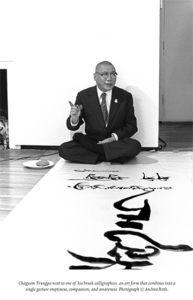
While Trungpa Rinpoche was a Tibetan, his poetry is unique and has therefore been included in the contemporary Buddhist poetry section.
When Chogyam Trungpa Rinpoche arrived in the United States, he asked, “Where are your poets? Take me to your poets!” Not only was Trungpa Rinpoche a spiritual teacher, but he was also an avid poet and dharma artist. Below, we describe the differences between our multiple collections of his work:
$19.95 - Paperback
Timely Rain: Selected Poetry of Chogyam Trungpa
Timely Rain is a collection of new and previously published poems, edited and curated by David I. Rome. While First Thought Best Thought presents poems in roughly chronological order, this collection is organized thematically, with each thematic section in chronological order. This allows readers to more easily navigate the poems, while also witnessing the evolution of Trungpa’s expressiveness and state of mind. Editor David Rome reflects in his Afterword that “poetry is also a refuge for Trungpa, perhaps the only place where he is able to step out of all the roles and self-inventions and speak truthfully from—and to—his own heart” (193). Themes contained herein include loneliness, samsara and nirvana, love, and sacred songs.
$16.95 - Paperback
Mudra is a selection of spontaneous, celebratory poems of devotion written by Chogyam Trungpa Rinpoche between 1959 and 1971. Trungpa opens his collection with two translations of Jigme Lingpa and Patrul Rinpoche, explaining that “they are the vajra statement which frees the people of the dark ages from the three lords of materialism and their warfare.” Also included are ten traditional Zen oxherding pictures along with Trungpa’s unique commentary.
$24.95 - Paperback
First Thought Best Thought: 108 Poems
Dictated (Trungpa composed poems verbally to a scribe) around the time of his arrival in the United States, this collection of poems, with an introduction by Allen Ginsberg, encapsulates Trungpa’s creative energy. His vision of joining East and West shines through each poem, combining classical Tibetan poetic influences with a modern American poetic style. As the collection progresses chronologically, readers witness Trungpa’s increasing familiarity and comfort with American culture. The collection’s title pays homage to William Blake’s “First thought is best in Art, second in other matters,” while also invoking the notion of beginner’s mind. As Ginsberg writes in his introduction, here is an “amazing chance to see his thought process step by step, link by link, cutting through solidifications of opinions & fixations” (xv).
Buddhist Songs and Poetry from Southeast Asia
Until Nirvana's Time: Buddhist Songs from Cambodia
By Trent Walker
Until Nirvana’s Time presents forty-five Dharma songs, whose soaring melodies have inspired Cambodian Buddhist communities for generations. Whether recited in daily prayers or all-night rituals, these poems speak to our deepest concerns—how to die, how to grieve, and how to repay the ones we love.
Introduced, translated, and contextualized by scholar and vocalist Trent Walker, this is the first collection of traditional Cambodian Buddhist literature available in English. Many of the poems have been transcribed from old cassette tapes or fragile bark-paper manuscripts that have never before been printed. A link to recordings of selected songs in English and Khmer accompanies the book.
Contemporary Buddhist Poetry
The First Free Women: Original Poems Inspired by the Early Buddhist Nuns, by Matty Weingast
Composed around the Buddha’s lifetime, the original Therigatha (“Verses of the Elder Nuns”) contains the poems of the first Buddhist women: princesses and courtesans, tired wives of arranged marriages and the desperately in love, those born into limitless wealth and those born with nothing at all. The authors of the Therigatha were women from every kind of background, but they all shared a deep-seated desire for awakening and liberation.
In The First Free Women, Matty Weingast has reimagined this ancient collection and created an original work that takes his experience of the essence of each poem and brings forth in his own words the struggles and doubts, as well as the strength, perseverance, and profound compassion, embodied by these courageous women.
Beneath a Single Moon: Buddhism in Contemporary American Poetry, edited by Kent Johnson & Craig Paulenich
For readers who prefer a more modern aesthetic, Beneath a Single Moon is a delightful read. This anthology features more than 250 poems by forty-five contemporary American poets, supplemented with essays exploring spiritual poetic practice. Among those included in this collection are John Cage, Diane di Prima, Norman Fischer, Allen Ginsberg, Susan Griffin, Anne Waldman, Philip Whalen, and Gary Snyder, who also provides the book’s introduction. Offering a refreshing look at spiritual poetry, the editors explain that “the variousness of the work [stands] very much at odds with the fairly common notion of American ‘Zen’ poetry as a literary remnant of the sixties, with derivative, and generally identifiable ‘Eastern’ criteria. It [is] even more intimately at odds, perhaps, with the well-diffused perception—at least in the West—of Buddhism as collectivizing and inimical to individual spirit” (xv-xvi).
After Ikkyu & Other Poems, by Jim Harrison
Those who find spiritual poetry can become too rigid or serious will find this to be a refreshing departure from the norm. These raw and often pithy poems by novelist Jim Harrison draw inspiration from his many years of Zen practice, and in perfect Zen spirit, they reveal a poet and practitioner who does not take himself too seriously. In his introduction Harrison explains, “It doesn’t really matter if these poems are thought of as slightly soiled dharma gates or just plain poems. They’ll live or die by their own specific density, flowers for the void” (ix).
Listen to a sample from Jim Harrison's original reading of After Ikkyu. Audiobook available on Audible and Apple.

Kurtis Schaeffer, Lives of the Masters series editor, introduces the series with this note:
"Buddhist traditions are heir to some of the most creative thinkers in world history. The Lives of the Masters series offers lively and reliable introductions to the lives, works, and legacies of key Buddhist teachers, philosophers, contemplatives, and writers. Each volume in the Lives series tells the story of an innovator who embodied the ideals of Buddhism, crafted a dynamic living tradition during his or her lifetime, and bequeathed a vibrant legacy of knowledge and practice to future generations.
Lives books rely on primary sources in the original languages to describe the extraordinary achievements of Buddhist thinkers and illuminate these achievements by vividly setting them within their historical contexts. Each volume offers a concise yet comprehensive summary of the master’s life and an account of how they came to hold a central place in Buddhist traditions. Each contribution also contains a broad selection of the master’s writings.
This series makes it possible for all readers to imagine Buddhist masters as deeply creative and inspired people whose work was animated by the rich complexity of their time and place and how these inspiring figures continue to engage our quest for knowledge and understanding today."
Related Titles
About the Books
Tsongkhapa: A Buddha in the Land of Snows
By Thubten Jinpa
H. H. The Dalai Lama introduces this monumental and definitive biography authored by his long-time translator Thubten Jinpa, and released 600 years following Tsongkhapa's parinirvana:
"An important part of Tsongkhapa’s legacy is the emphasis he placed on critical analysis as essential to the attainment of enlightenment. He revitalized the approach, typical of the Nalanda tradition, that takes reasoned philosophical scrutiny as essential to understanding the nature of reality. . . .
Tsongkhapa had a far-reaching impact on Tibetan tradition. In terms of the three higher trainings in ethics, concentration, and wisdom, he wrote, “Those who wish to discipline others have first to discipline themselves.” His strict adherence to the culture and practice of vinaya, or monastic discipline, set a widely admired standard. His thorough and illuminating writings about Madhyamaka philosophy profoundly enriched Tibetan understanding of Nāgārjuna’s school of thought, stimulating critical thinking about the deeper implications of the view of emptiness. Moreover, his systematic exploration of Buddhist tantra, especially the highest yoga systems of Guhyasamāja and Cakrasaṃvara, has ensured not only that their practice has flourished but also that they have been more clearly understood."
See more about Tsongkhapa in our Reader's Guide to his life and works.
Here is Thubten Jinpa sharing his experience composing this biography:
Atiśa Dīpaṃkara: Illuminator of the Awakened Mind
By James B. Apple
Atiśa perhaps had the greatest impact on Buddhism in Tibet of all the Indian masters who visited there. A founder of the Kadam school, the origin of the Geluk tradition of the Dalai Lamas, Atiśa was a brilliant synthesizer whose contributions to Madhyamaka, Tantra, Mind Training (lojong), and the lamrim tradition have continued to be fundamental for practitioners and scholars of Tantra and the Mahāyāna.
Enjoy an excerpt from the preface to the book:
"Atiśa’s life and teachings are a Tibetan story, and what an amazing story it is. Atiśa’s life is guided by dreams, visions, and predictions from buddhas and bodhisattvas, including the savioress Tārā. In the story of Atiśa’s life, we enter a world of gold, sailing ships, palm-leaf manuscripts, and mantras, rather than credit cards, automobiles, social media, and cell phones. The story involves transactions in over two million dollars’ worth of gold and travels throughout maritime Buddhist Asia. The Tibetans have faithfully preserved what is known of Atiśa Dīpaṃkaraśrījñāna, the vicissitudes of his life, the struggles in his travels, and the spirit and meaning of his teachings."
Gendun Chopel: Tibet's Modern Visionary
By Donald S. Lopez Jr.
Artist, poet, iconoclast, philosopher, adventurer, master of the arts of love, tantric yogin, Buddhist saint, world traveler—these are but a few of the descriptions of one of Tibet's most famous modern visionaries, now presented in a single, definitive volume. Having written six books on Gendun Chopel, Donald Lopez takes the culmination of his intimate study and six published works on this figure to present in a comprehensive way his achievements, legacy, and journey—from his recognition as a tulku, to his travels throughout Tibet, India, and Sri Lanka, to his controversial imprisonment in Lhasa and death following the communist invasion of Tibet.
In the introduction Donald Lopez Jr. presents Chopel alongside the politically charged atmosphere that shaped the life, travels, and writing of Tibet's modern visionary,
"Indeed, unlike other important figures in Tibetan history, he was a man who made his name abroad, his life beginning and ending with the two most consequential foreign invasions in Tibetan history. He was born in August 1903, four months before British troops, under the command of Colonel Francis Younghusband, crossed the border into Tibet. He died in October 1951. On September 9, he was lifted from his deathbed to watch the troops of the People’s Liberation Army march into Lhasa.
. . . Near the end of his life, one of the few disciples who remained loyal after he was released from prison asked him, in the traditional Tibetan way, to compose his autobiography. Rather than do so with a lengthy work characteristic of the genre, he responded spontaneously, with a four-line poem:
A virtuous family, the lineage of monks, the way of a layman,
A time of abundance, a time of poverty,
The best of monks, the worst of laymen,
My body has changed so much in one lifetime."
The most wide-ranging work available on this extraordinary figure, this inaugural book of the Lives of the Masters series is an instant classic.
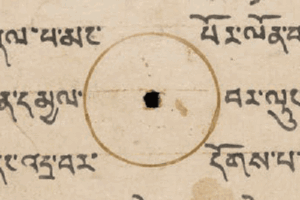
Tibetan Language Reader's Guide

Interested in learning Tibetan or deepening your existing Tibetan language skills? Below is a guide to help you choose the right resources for your needs. We offer two tracks: one for those who plan on traveling or spending a longer period of time in India, Nepal, Bhutan, China, and Tibet; and another for those who are focused on classical written Tibetan for academic or practice purposes.
Reading or Translating Classical Tibetan
The following materials are geared for those wanting in-depth study of the written language of Tibet, including the classical and literary. These were all designed to work together and complement each other, though can be used stand-alone as well. For spoken/colloquial Tibetan, skip to that section below.
Translating Buddhism from Tibetan
This book is the foundation for the books that follow. It's a complete textbook on classical Tibetan suitable for beginning or intermediate students. Based on the system developed by Jeffrey Hopkins at the University of Virginia, it presents—in lessons with drills and reading exercises—a practical introduction to Tibetan grammar, syntax, and technical vocabulary used in Buddhist works on philosophy and meditation. A well-designed learning system, it serves as an introduction to reading and translating Tibetan as well as to Buddhist philosophy and meditation. Each chapter contains a vocabulary of helpful Buddhist terms. Students with prior experience will find that the seven appendices—which review the rules of pronunciation, grammar, and syntax—are an indispensable reference.
How to Read Classical Tibetan, Volume One
Craig Preston, the author, recommends that people study Translating Buddhism from Tibetan as a preliminary to using this book. This is a complete language course built around the exposition of a famous Tibetan text, Summary of the General Path to Buddhahood, written at the beginning of the fifteenth century. All the language tools you need to work at your own pace are here in one place. You won't need a dictionary because all the words and particles are translated and explained in each occurrence, and there is a complete glossary at the end of the book. Every sentence is diagrammed and completely explained so that you can easily see how the words and particles are arranged to convey meaning. Because everything is explained in every sentence, you will learn to recognize the recurrent patterns, which makes the transition from learning words to reading sentences easier than it would be otherwise. As you study How to Read Classical Tibetan, you will learn to recognize the syntactic relationships you encounter, understand the meaning signified, and translate that meaning correctly into English.
How to Read Classical Tibetan, Volume Two
A follow-up to Volume One, this book assumes the reader is familiar with both the previous volume and Translating Buddhism from Tibetan.
Learning Classical Tibetan: A Reader for Translating Buddhist Texts
Designed for both classroom use and independent study, Learning Classical Tibetan is a modern and accessible reader for studying traditional Buddhist texts. Unlike other readers of Classical Tibetan, this is a comprehensive manual for navigating Tibetan Buddhist literature drawing on a monastic curriculum. Utilizing the most up-to-date teaching methods and tools for Tibetan language training, students learn to navigate the grammar, vocabulary, syntax, and style of Classical Tibetan while also engaging the content of Buddhist philosophical works.
Chapters consist of a contextual introduction to each reading, a Tibetan text marked with references to annotations that provide progressive explanations of grammar, cultural notes on vocabulary, translation hints, notes on the Sanskrit origins of Tibetan expressions and grammatical structures, as well as a literal translation of the text. The reader also includes study plans for classroom use, discussion of dictionaries and other helpful resources, a glossary of English grammatical and linguistic terms, and much more.
This reader can be used in conjunction with Paul Hackett’s expanded edition of his well-known Tibetan Verb Lexicon. Using a clear and approachable style, Hackett provides a practical and complete manual that will surely benefit all students of Classical Tibetan.
A Tibetan Verb Lexicon
This is the second and much-expanded edition of this essential resource for those studying or translating Tibetan. edition . With over 4,500 entries of the most frequently used Tibetan verbs, this new edition of Hackett’s highly acclaimed Tibetan Verb Lexicon is an incomparable lexical resource. This comprehensive verb dictionary includes various verb forms, verbal collocations, auxiliary constructions together with grammatical information, Sanskrit equivalents, and example sentences, making it a vital tool for any translator, writer, or scholar who intends to maximize the quality of their work related to the Tibetan language.
Much more than a mere translation of existing works, this lexicon was compiled employing statistical techniques and data and draws on sources spanning the 1,200 years of Tibet's classical literature, covering all major lineages. The 4,500 root verb forms and phrasal verb subentries incorporates a wide range of information not previously available in dictionary form. The individual entries are in Tibetan script and contain English meanings, Sanskrit equivalents, complete sentences drawn from the corpus of Tibetan classical literature, and related sentence structure information. An extensive introduction to contemporary linguistic theory as applied to Tibetan verbs provides the theoretical underpinnings of the lexicon. Paul Hackett, the author, strongly encourages readers to become familiar with Translating Buddhism from Tibetan before approaching this book.
Spoken and Written Modern Tibetan
Below you will see our resources if you with to speak and read modern, colloquial Tibetan.
Learning Practical Tibetan
This book, for the casual traveler and aspiring student, offers a great overview, packed with practical examples for the casual student. It gives the basics of grammar and phonetics and offers practical sample dialogues. And it is small enough that you could easily take it with you on your adventure! It starts off with some basic grammar and vocabulary and then moves into dialogues for eating, shopping, visiting monasteries, transportation, and more.
Manual of Standard Tibetan
In this comprehensive treatment of modern Tibetan, you'll learn about the everyday speech of Lhasa as it is currently used in Tibet and in the Tibetan diaspora. It not only places the language in its natural context but also highlights key aspects of Tibetan civilization and Vajrayana Buddhism. The manual, which consists of forty-one lessons, includes many drawings and photographs as well as two political and linguistic maps of Tibet. You'll find the appendices especially helpful as they outline the differences between written literary and spoken Tibetan; detail pronunciation; and explain the use of honorific words, compound terms, and transfers from other languages. Two CDs provide an essential aural complement to the manual, making it a very practical guide for more serious students.
Fluent Tibetan
This book is a fully comprehensive course in spoken Tibetan which has MP3 files to support a real immersion experience. The most systematic and extensive course system now available for spoken Tibetan, Fluent Tibetan was developed by language experts working in conjunction with indigenous speakers at the University of Virginia. Based on government-approved courses for diplomats needing to learn a language quickly, the method acquaints students with the sounds and patterns of Tibetan speech through repetitive interactive drills, enabling the quick mastery of increasingly complex structures and thereby promoting rapid progress in speaking the language.
$150.00 - Hardcover
SNOW LION NEWSLETTER ARCHIVE
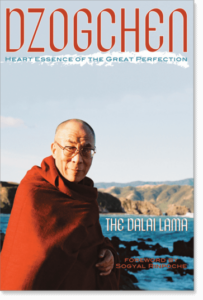
| The following article is from the Spring, 2001 issue of the Snow Lion Newsletter and is for historical reference only. You can see this in context of the original newsletter here. |
The Heart Essence of the Great Perfection
by His Holiness the Dalai Lama translated by Thupten Jinpa and Richard Barron foreword by Sogyal Rinpoche edited by Patrick Gaffney 272 pages, 8 pages of photos, 6x9 1-55939-157-X, $24.95 cloth Available Now
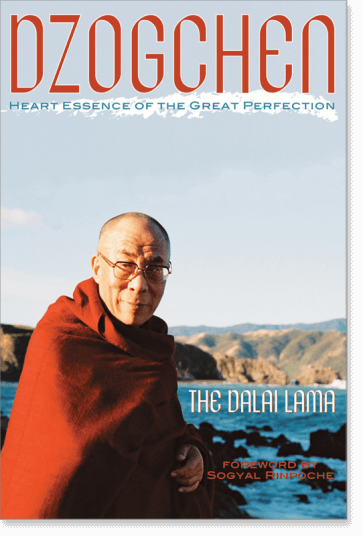
His Holiness the Dalai Lama brings to his explanation of Dzogchen a perspective and breadth which are unique...To receive such teachings from His Holiness is, I feel, something quite extraordinary.Sogyal Rinpoche, author of The Tibetan Book of Living and Dying
The following is an excerpt from the book.
The Ground, Path and Fruition of Dzogchen
Let us now consider the teachings particular to the Secret Mantra Vehicle of the early transmission school of the Nyingma tradition, and what these teachings say about the three phases of ground, path, and fruition. The way in which the ground of being abides, as this is definitively understood and described in the Nyingma teachings, entails its essence, its nature, and its energy, or responsiveness. In particular, the first two aspects define the ground for the Nyingma school, its essence being primordial purity or kodak, and its nature being spontaneous presence or Ihundrup.
Nagarjuna, in his Fundamental Treatise on the Middle Way called Wisdom', states:
The dharma that is taught by the buddhas,
Relies completely upon two levels of truth:
The worldly conventional level of truth,
And the ultimate level of truth.
All that is knowableall phenomena and all that is comprised within an individual's mind and bodyis contained within these two levels of truth, conventional and ultimate. In the Dzogchen context, the explanation given would be in terms of primordial purity and spontaneous presence, and this is analogous to a passage in the scriptures:
It is mind itself that sets in place the myriad array
Of beings in the world, and the world that contains them.
That is to say, if we consider the agent responsible for creating sam- sara and nirvana, it comes down to mind. The Sutra on the Ten Grounds states, These three realms are mind only. In his commentary to his own work, Entering the Middle Way Candrakirti elaborates on this quotation, stating that there is no other creative agent apart from mind.
When mind is explained from the point of view of the Highest Yoga Tantra teachings and the path of mantra, we find that many different levels or aspects of mind are discussed, some coarser and some more subtle. But at the very root, the most fundamental level embraced by these teachings is mind as the fundamental, innate nature of mind. This is where we come to the distinction between the word sem in Tibetan, meaning ordinary mind' and the word rigpa signifying pure awareness'. Generally speaking, when we use the word sem, we are referring to mind when it is temporarily obscured and distorted by thoughts based upon the dualistic perceptions of subject and object. When we are discussing pure awareness, genuine consciousness or awareness free of such distorting thought patterns, then the term rigpa is employed. The teaching known as the Four Reliances' states: Do not rely upon ordinary consciousness, but rely upon wisdom. Here the term narnshe, or ordinary consciousness, refers to mind involved with dualistic perceptions. Yeshe', or wisdom, refers to mind free from dualistic perceptions. It is on this basis that the distinction can be made between ordinary mind and pure awareness.
When we say that mind' is the agent responsible for bringing the universe into being, we are talking about mind in the sense of rigpa, and specifically its quality of spontaneous presence. At the same time, the very essence of that spontaneously present rigpa is timelessly empty, and primordially puretotally pure by its very natureso there is a unity of primordial purity and spontaneous presence. The Nyingma school distinguishes between the ground itself, and the ground manifesting as appearances through the eight doorways of spontaneous presence', and this is how this school accounts for all of the perceptions, whether pure or impure, that arise within the mind. Without ever deviating from basic space, these manifestations and the perceptions of them, pure or impure, arise in all their variety. That is the situation concerning the ground, from the point of view of the Nyingma school.
On the basis of that key point, when we talk about the path, and if we use the special vocabulary of the Dzogchen tradition and refer to its own extraordinary practices, the path is twofold, that of trekcho and togal. The trekcho approach is based upon the primordial purity of mind, kadak, while the togal approach is based upon its spontaneous presence, lhundrup. This is the equivalent in the Dzogchen tradition of what is more commonly referred to as the path that is the union of skilful means and wisdom.
When the fruition is attained through relying on this twofold path of trekcho and togal, the inner lucidity' of primordial purity leads to dharmakaya, while the outer lucidity' of spontaneous presence leads to the rupakaya. This is the equivalent of the usual description of dharmakaya as the benefit that accrues to oneself and the rupakaya as the benefit that comes to others. The terminology is different, but the understanding of what the terms signify is parallel. When the latent, inner state of bud- dhahood becomes fully evident for the practitioner him or herself, this is referred to as inner lucidity' and is the state of primordial purity, which is dharmakaya. When the natural radiance of mind becomes manifest for the benefit of others, its responsiveness accounts for the entire array of form manifestations, whether pure or impure, and this is referred to as outer lucidity', the state of spontaneous presence which comprises the rupakaya.
In the context of the path, then, this explanation of primordial purity and spontaneous presence, and what is discussed in the newer schools of Highest Yoga Tantra both come down to the same ultimate point: the fundamental innate mind of clear light.
What, then, is the profound and special feature of the Dzogchen teachings? According to the more recent traditions of Tibetan Buddhism, collectively known as the Sarma schools of the Secret Mantra Vehicle, in order for this fundamental innate mind of clear light to become fully evident, it is necessary first of all for the coarser levels of ordinary mind, caught up with thoughts and concepts, to be harnessed by yogas, such as the yoga of vital energies, pranayoga, or the yoga of inner heat, tummo. On the basis of these yogic practices, and in the wake of those adventitious thought patterns of ordinary mind being harnessed and purified, the fundamental innate mind of clear light-'mind' in that sense becomes fully evident.
From the point of view of Dzogchen, the understanding is that the adventitious level of mind, which is caught up with concepts and thoughts, is by its very nature permeated by pure awareness. In an experiential manner, the student can be directly introduced by an authentic master to the very nature of his of her mind as pure awareness. If the master is able to effect this direct introduction, the student then experiences all of these adventitious layers of conceptual thought as permeated by the pure awareness which is their nature, so that these layers of ordinary thoughts and concepts need not continue. Rather, the student experiences the nature that permeates them as the fundamental innate mind of clear light, expressing itself in all its nakedness. That is the principle by which practice proceeds on the path of Dzogchen.
The Role of an Authentic Guru
So in Dzogchen, the direct introduction to rigpa requires that we rely upon an authentic guru, who already has this experience. It is when the blessings of the guru infuse our mindstream that this direct introduction is effected. But it is not an easy process. In the early translation school of the Nyingma, which is to say the Dzogchen teachings, the role of the master is therefore crucial.
In the Vajrayana approach, and especially in the context of Dzogchen, it is necessary for the instructions to be given by a qualified master. That is why, in such approaches, we take refuge in the guru as well as in the Buddha, Dharma, and Sangha. In some sense, it is not sufficient simply to take refuge in the three sources of refuge; a fourth element is added, that of taking refuge in the guru. And so we say, I take refuge in the guru; I take refuge in the Buddha; I take refuge in the Dharma; I take refuge in the Sangha. It is not so much that the guru is in any way separate or different from the Three Jewels, but rather that there is a particular value in counting the guru separately. I have a German friend who said to me, You Tibetans seem to hold the guru higher than the Buddha. He was astonished. But this is not quite the way to understand it. It is not as though the guru is in any way separate from the Three Jewels, but because of the crucial nature of our relationship with the guru in such practice and teachings, the guru is considered of great importance.
Now this requires that the master be qualified and authentic. If a master is authentic, he or she will be either a member of the sangha that requires no more training, or at least the sangha that still requires training but is at an advanced level of realization. An authentic guru, and I stress the word authentic','must fall into one of these two categories. So it is because of the crucial importance of a qualified and authentic guru, one who has such realization, that such emphasis is placed, in this tradition, on the role of the guru. This may have given rise to a misconception, in that people have sometimes referred to Tibetan Buddhism as a distinct school of practice called Lamaism', on account of this emphasis on the role of the guru. All that is really being said is that it is important to have a master, and that it is important for that master to be authentic and qualified.
Even in the case of an authentic guru, it is crucial for the student to examine the guru's behaviour and teachings. You will recall that earlier I referred to the Four Reliances.' These can be stated as follows:
Do not rely upon the individual, but rely upon the teaching.
As far as the teachings go, do not rely upon the words alone, but rely upon the meaning that underlies them.
Regarding the meaning, do not rely upon the provisional meaning alone, but rely upon the definitive meaning.
And regarding the definitive meaning, do not rely upon ordinary consciousness, but rely upon wisdom awareness.
This is how a student should examine a teacher, using these four reliances. Our teacher, Lord Buddha, said,
O bhiksus and wise men,
Just as a goldsmith would test his gold
By burning, cutting, and nibbing it,
So you must examine my words and accept them,
But not merely out of reverence for me.
All of the foregoing comments have been my way of introducing you to the background to this empowerment. What is most important during an empowerment of this nature is that: as Buddhists, we place great emphasis on taking refuge; as Mahayana Buddhists, we place great emphasis on the bodhisattva vow and arousing bodhicitta; and, as Vajray- ana practitioners, we lessen our fixation on perceiving things in an ordinary way, and rely upon pure perception. This is how you should receive an empowerment, ä_æ
$21.95 - Paperback
By: H.H. the Fourteenth Dalai Lama & Richard Barron (Chokyi Nyima) & Patrick Gaffney & Thupten Jinpa
BOOKS ON DZOGCHEN
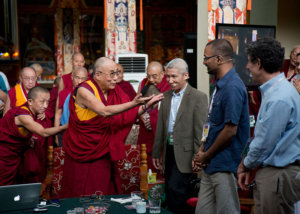
| The following article is from the Summer, 2000 issue of the Snow Lion Newsletter and is for historical reference only. You can see this in context of the original newsletter here. |
The Mind and Life Conference 2000
BY VEN. THUBTEN CHODRON
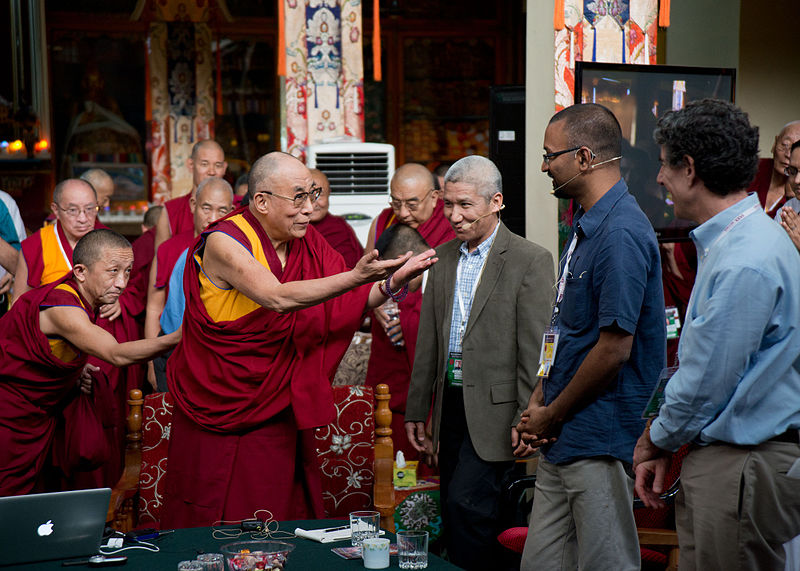
HH Dalai Lama, Thupten Jinpa, and Richard Davidson at a recent Mind and Life conference. For more info on this image see here.
Beginning in the mid-1980s, the Mind and Life Institute has brought together scientists from various fields of expertise with His Holiness the Dalai Lama in a series of conferences. A theme is picked for each, and five to seven scientists in that field are selected to make presentations to His Holiness. These presentations are given in the morning session each day, and lively discussions among these key participants, who are seated in a circle, occupy the afternoon session. In addition to the scientists, two Tibetan-English translators are present. A group of observerstwenty to forty in numbersit around the periphery. The atmosphere is informal and intimate. The topics of previous conferences have ranged from physics and astronomy to sleeping and dreaming to the relationship between the mind and the brain.
The eighth Mind and Life Conference, held in Dharamsala March 20-24, 2000, explored the topic of destructive emotions. While it is impossible to summarize the complex proceedings in a way pleasing to all, I will mention a few highlights as well as discuss some of the points I found most interesting.
Dr. Owen Flanagan, Professor of Philosophy at Duke University, spoke about the role of emotion and virtue in making a good life. The West has several approaches to this topic. Religious moral philosophy speaks of the destructive nature of some emotions and the improvement of human qualities through religious practice, while secular moral philosophy discusses the topic in terms of democracy and reason. Science sees emotions as having a physiological basis, and this raises further questions as to human nature and the possibility of pacifying destructive emotions. In the West, emotions are important for determining what is moral, and morality is essential for the functioning of society. Thus working with emotions is seen as important for social interaction, not for having a good soul or being a good person. This leads the West to focus on self-esteem and self-accomplishment as positive emotions, not on having a harmonious inner emotional life.
We find three main answers in response to the question, What are we really like deep down inside? The rational egoists say that we look out for our own good, and know that only by being nice to others will we get what we want. The second is that we first are selfish and take care of ourselves and then are compassionate sharing any extra resources with others. The third is that we are basically compassionate, but if there's scarcity in resources we become selfish. His Holiness believes human beings are by nature gentle and compassionate, and due to self-centeredness and ignorance, people feel and act in the opposite way. Still, we cannot say that ordinary human nature is one of cherishing others.
Western culture considers love and compassion to be other-oriented. His Holiness clarified that in Buddhism, they are felt towards oneself as well. Wanting ourselves to be happy and free of suffering is not necessarily selfish. Having those feelings in healthy ways is essential to practice the path, and they are included in the love and compassion we develop on the path.
Ven. Mattieu Ricard, a scientist and a Buddhist monk, gave an excellent summary of the Buddhist approach to the mind, speaking about the pure luminous nature of mind, the distortions of the destructive emotions, and the potential to eliminate them.
His Holiness mentioned two types of emotions. The first, impulsive, destructive emotions, are based on misconceptions and therefore cannot be cultivated limitlessly. The second, realistic ones, such as compassion and disillusionment with samsara, can be enhanced limitless. The first are based on illogical reasons that can be disproved, whereas the second are grounded in valid observation and reasoning. We must use valid reasoning to develop mental states opposed to the destructive emotions. For example, love, as an antidote to anger, must be cultivated through reasoning. It will not arise simply by praying to the Buddha. He also suggested that scientists perform neurological studies to determine if these two types of emotions are linked with specific brain activities.
Dr. Paul Ekman, Professor of Psychology at UCSF Medical School, spoke about the evolution of human emotion. Previously it was thought that emotions, like language and values, differed from one culture to another. However, Darwin saw them as common to all people and existing in animals as well. Ekman's research showed that across cultures, people all identified certain facial expressions as indicating the same emotions. Also, the same physiological changes occurred in people from all cultures when they feel specific emotions. For example, when fearful or angry, everyone's heart rate increases.
Emotions occur quickly. We feel that emotions happen to us, not that we chose them. We aren't witness to the process leading to them and often become aware of them only after they are strong. Here His Holiness gave the example of identifying laxity and excitement in meditation. Initially, we are unable to identify them quickly but with the development of alertness, we can detect them even before they arise.
Ekman differentiated between thoughts, which are private, and emotions, which are not. For example, if someone is fearful when arrested, we know his emotion, but we don't know the thought provoking it, i.e. is he afraid because he got caught or because he is innocent? Thoughts and emotions are different. His Holiness responded that in Buddhism the word namtog (preconception or superstition) encompasses both. Also, both are conceptual consciousnesses, and both must be transformed on the path.
Whereas emotions arise and cease comparatively quickly, moods last longer. We can usually identify a specific event which caused an emotion, but often cannot for a mood. Moods bias how we think and make us vulnerable in ways we usually are not. When we are in a bad mood, for example, we look for a chance to be angry. There is no Tibetan word for mood, but His Holiness said that perhaps the mental unhappiness that Shantideva says is the fuel for anger could be an example of it.
In addition to emotions and moods, there are traits and pathological manifestations of emotions. For example, fear is an emotion, appre- hensiveness is a mood, shyness is a personal trait, and a phobia is a pathological manifestation.
After a destructive emotion arises, there is a refractory period during which new information cannot enter our mind and we think only of things that re-enforce the emotion. Only after this time are we able to look at the situation more reasonably and calm down. For example, if a friend is late, we think he is deliberately insulting us and see everything he does thereafter as hostile. Therapy aims to shorten this refractory period and to help the person control his behavior during the refractory period.
Dr. Richard Davidson, Professor of Psychology and Psychiatry at the University of Wisconsin, spoke on the physiology of destructive emotions, also called affective neuro- science. Bringing out a bright pink plastic brain, he showed His Holiness the various areas activated during particular perceptions and emotions. Certain activities, such as playing tennis or having emotions, are complex and many areas of the brain are involved in them. However, certain patterns can be seen. For example, a person with damage to the lower frontal lobe has more unregulated emotions, while the left frontal lobe is more active when we have positive emotions. In both depression and post-traumatic stress disorder, the hippocampus shrinks. The amygdala is the center for negative emotions, especially fear, and the amygdala shrinks in a person with uncontrolled aggression. Both the amygdala and the hippocampus change in response to our experiences and are affected by the emotional environment in which we were raised.

Richardson proposed several antidotes to destructive negative emotions: change the brain activity, change the refractory period, do cognitive restructuring by learning to think differently about I events, and cultivate positive emotions.
All forms of craving drug addition, pathological gambling, etc.involve abnormalities in the dopamine levels in the brain. Molecular changes of dopamine that come during craving alter the dopamine system, so that an object which was previously neutral becomes important. In addition, different brain circuitry is involved in wanting and liking. When we crave something, the wanting circuitry becomes strong and the liking circuitry is weakened. The person feels continually dissatisfied and need more and better. Richardson proposed several antidotes to destructive negative emotions: change the brain activity, change the refractory period, do cognitive restructuring by learning to think differently about events, and cultivate positive emotions.
Dr. Jeanne Tsai, Assistant Professor of Psychology at the University of Minnesota, spoke on culture and emotions. Cultures differ in their view of the self, and that influences people's emotions. Thus, therapies that work on Euro-Americans often do not work for Asian-Americans. In general, Westerners feel their self to be independent and separate from others. When asked to describe themselves, Americans speak of their internal attributes, saying, I am outgoing, smart, attractive, etc. Asians, on the other hand, experience their self as connected with others and defined in terms of social relationships. They describe themselves in terms of their social roles-I am a daughter, worker at this place, etc. People with an independent self seek to distinguish themselves from others. They emphasize self-enhancement, express their beliefs and emotions, and tell others about their own good qualities. They value being different from others and appreciate conflict because it provides an opportunity to express their feelings and opinions. They focus on themselves during an interaction with another, and value emotions such as self-esteem and self-worth. People with an interdependent self seeks to maintain relationships. Thus they minimize their own importance, are modest, and control how they express their beliefs and emotions to maintain harmony with others. Their emotions arise more slowly and they return to baseline quicker than Westerners. During interactions, they focus more on others and value emotions such as humility and willingness to cooperate.
As someone who has taught Buddhism in a variety of cultures, I found this interesting. It made me wonder: Do different aspects of the Dharma need to be emphasized according to the sense of self found in a culture? In addition, Buddhism has been expressed for generations in cultures with an interdependent sense of self. What, then, will change and what should we be careful does not change as Buddhism spreads into cultures where an independent self is valued?
Dr. Mark Greenberg, Professor of Human Development and Family Studies at Pennsylvania State University spoke on emotional education. Having studied the development of emotions, he developed a program teaching young children how to manage their destructive emotions, especially anger. This helps children to calm down (i.e. decrease refractory period), be aware of emotional states in themselves and others, discuss their feelings as a method to solve problems, plan ahead to avoid difficulties, and be aware of the effects their behavior has on others. They teach others that emotions are important signals about their own and others' needs, that feelings are normal but the behavior may or may not be appropriate, that they can't think clearly until they're calm, and to treat others the way they want to be treated. The program contains lessons on various emotions and their opposites. The children also have a set of cards with different facial expressions of emotions that they can show so others know how they're feeling. His Holiness was pleased with this and added that in addition to managing destructive emotions, children (and adults too) need to cultivate positive ones as well. Although these positive emotions may not be usable in the heat of the moment, they affect our temperament and set a good foundation, like bolstering our emotional immune system. Davidson said that when we practice something often, our brain also changes.
Dr. Francisco Varela, Professor of Cognitive Science and Epistemology at Ecole Polytechnique, spoke about neruoplasticity. He explained new, more refined techniques for measuring minute or brief changes in the brain, and showed computer diagrams of synchronicity or the lack of it among different areas of the brain during the process of seeing and knowing an object. His Holiness said there may be a connection between that and the process of our visual consciousness and then our mental consciousness cognizing an object. He suggested teaching lorig (mind and its functions) in conjunction with neuroscience to make the topic more relevant.
Whereas His Holiness was fascinated by discussion of brain activity, others had different reactions. Science teaches that genetic makeup, environment, and external experiences influences the brain, which in turn creates emotions and leads to thoughts. From the Buddhist view, thoughts influence emotions, which in turn affect behavior and brain functions. Some found the scientific view disempowering because by emphasizing external factors, there seemed little the individual could do to influence his emotions and thoughts. They found the Buddhist view more empowering because it seemed that we could do something to help ourselves.
Having summarized the main events, I would like to discuss some of the points that I found particularly interesting. First, no word for emotion exists in the Tibetan language. Klesa (often translated as delusions, afflictions, or disturbing attitudes and negative emotions) include attitudes as well as emotions. When the scientists were presented with the list of the six root and twenty secondary klesa from the lorig text and told that the Buddhist delineation of destructive emotions, they did not understand why ignorance, for example, was called an emotion. Nor was it clear to them why attitudes such as incorrect views of ethical disciplines, and emotions such as jealousy, were together in one list. Later they learned that these are included in one list because they all cause cyclic existence and impede liberation.
Second, the meaning of emotion according to science and Buddhism differs. From a scientific viewpoint, an emotion has three aspects: physiological, feeling, and behavioral. Brain activity and hormonal changes are physiological, and aggressive or passive actions are behavioral. In Buddhism, emotions refer to the mental state. Little is said of the physiological changes, probably because the scientific instruments for measuring them were unavailable in ancient India or Tibet. Buddhism also distinguishes between the emotion of anger and the physical or verbal action of being assertive, which may or may not be motivated by anger. Similarly, someone may be patient inside, but have either assertive or passive behavior, depending on the situation.
Third, Buddhists and scientists differ on what is considered a destructive emotion. For example, scientists say that sadness, disgust, and fear are negative emotions in the sense that they are unpleasant to experience. However, from a Buddhism viewpoint, two types of sadness, disgust, and fear are discussed. One is based on distortion, interferes with liberation, and is to be abandoned, for example, sadness at the breakup of a romantic relationship and fear of losing our job. Another type of sadness helps us on the path. For example, when the prospect of having one rebirth after another in samsara makes us sad and even fills us with disgust and fear, they are positive because they prompt us to generate the determination to be free from cyclic existence and attain liberation. Such sadness, disgust, and fear are positive because they are based on wisdom and stimulate us practice and gain realizations of the path.
Science says all emotions are natural and okay, and that emotions become destructive only when they are expressed in an inappropriate way or time or to an inappropriate person or degree. For example, it is normal to experience sadness when someone dies, but a depressed person is sad in an inappropriate situation or to an inappropriate degree. Inappropriate physical and verbal displays of emotions need to be changed, but emotional reactions, such as anger, are not bad in themselves. Therapy is aimed more at changing the external expression of the emotions than the internal experience of them. Buddhism, on the other hand, believes that destructive emotions themselves are obstacles and need to be eliminated to have happiness.
The question Is there a positive form of anger? came up several times. Some of the scientists believe that from the viewpoint of evolutionary biology, anger enables human beings to destroy their foes, and thus stay alive and reproduce. Another type is associated with a constructive impulse to remove an obstacle. For example, if a child so she can't get toy, her anger makes her think how to get it. His Holiness commented that this anger may be conjoined with solving problems, but does not necessarily help to solve the problem. It is being called positive on basis of its effectthe person getting what she wantsnot its being virtuous. In addition, such anger does not always lead to a solution of the problem. For example, frustration and anger due to our inability to concentrate when meditating rather than help us attain calm abiding, block our practice. His Holiness did not agree that there is a positive form of anger. Although in a secular way, anger at someone who is harming himself or others could be called positive, arhats are free of this. Thus, righteous anger is a defilement to be eliminated to attain nirvana. We can have compassion for the person and still try to stop his harmful behavior. Thus, while the West values moral outrage as an emotion, from a Buddhist viewpoint, it is skillful means, a behavior motivated by compassion.
In a previous Mind/Life Conference, the question was raised. Does a Buddha have emotions? After much discussion, it was decided that Bud- dhas do have emotions, for example, impartial love and compassion for all beings. They feel generous and patient. They care about others and feel sad when they see others suffering. However, a Buddha's sadness at seeing suffering differs from the feeling most people have. Our sadness is a form of personal distress; we feel despair or depression. Bud- dhas, on the other hand, are sad that others do not observe karma and its effects and thus create the cause for their own suffering. Buddhas feel hope and optimism for the future for they know that such suffering can cease because its causes disturbing attitudes, negative emotions, and karma- can be eliminated. Buddhas are also much more patient than we are. Knowing that stopping suffering is not a quick fix, they are happy to work for a long time to overcome it.
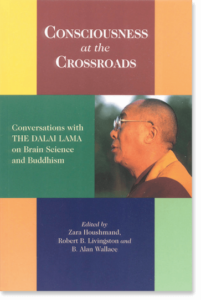
The Dalai Lama, Buddhism, and Science: Consciousness At the Crossroads
The Dalai Lama, Buddhism, and Science: Consciousness At the Crossroads
| The following article is from the Summer, 1999 issue of the Snow Lion Newsletter and is for historical reference only. You can see this in context of the original newsletter here. |
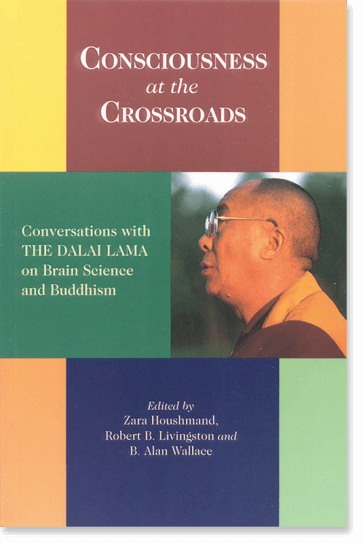
By H.H. the Fourteenth Dalai Lama
Edited by Zara Houshmand
Edited by Robert B. Livingston
Edited by B. Alan Wallace
*Note, Consciousness at the Crossroads is now published under the title Where Buddhism Meets Neuroscience and is part of The Core Teachings of the Dalai Lama.
This book addresses some of the most fundamental and troublesome questions that have driven a wedge between the realms of Western science and religion for centuries. Consciousness at the Crossroads is the result of a series of meetings between the Dalai Lama and a group of eminent neuroscientists and psychiatrists. The Dalai Lama regularly dedicates several days out of his busy schedule to engage in these kinds of meetings, which have resulted in more than a decade of fruitful dialogue between Buddhism and Western science.
Is the mind nothing more than an ephemeral side-effect of the brain's physical processes? Are there forms of consciousness so subtle that science has not yet identified them? How does consciousness begin? How do we know what we know? Buddhism, with its emphasis on empirical observation of mental processes, offers insights into these thorny questions, while the Dalai Lama's own incisive, clear approach and openminded pursuit of knowledge both challenges and offers inspiration to Western scientists.
Born in Amdo, Tibet in 1935, Tenzin Gyatso was recognized as the Fourteenth Dalai Lama, spiritual and temporal leader of Tibet. He has served as head of the Tibetan government-in-exile in Dharamsala, India, since the Chinese takeover of Tibet in 1959. Winner of the 1989 Nobel Peace Prize, today he is known the world over as a great spiritual teacher and a tireless worker for peace.
Following are excerpts from the the conference's opening remarks by Robert Livingston.
This initiates the second dialogue between Western neurosciences and Buddhist traditions. These two radically different ways of looking at mind and life have existed, mostly apart, over a span of about 2,500 years. They have been following such separate paths that there has been almost no cross-communication. So for all of us this is a significant opportunity. We anticipate that the Mind and Life dialogues will improve and increase communications and strengthen ties in terms of mutual understanding of neurosciences, consciousness, brain, mind, and the like, and also add new insights into human nature which we believe can contribute to world peace.
There are indeed two great fundamentals underlying this dialogue. First, the issues up for discussion here are not only of great importance in each individual human life, but their comprehension by a wider public may indeed be pivotal for human survival on a global scale. Such issues relate to individual and collective differences in perception, judgment, behavior, and communication. And second, the human brain is the only resourceful instrument for survival. It has always been obliged to beand continues to beconstructively adaptive. Yet its full potential will not be realized until the brain is better understood, particularly in terms of its individuality and the consequent diversity of world views.
We pay our respects to two cultural traditions which have been separated for so very long and now have a cordial opportunity for exchange by virtue of your curiosity, initiative, and generosity. This opens for neuroscientiSts an excellent opportunity for professional enrichment because Buddhists have been thinking about consciousness, mind, and body for a very long time along different conceptual paths. We must acknowledge our own humility and naivete: there are many things that we don't yet know about the brain and the mind, so many about which we are unsure, and others still about which we remain unknowingly in error.
We shall attempt to represent Western neurosciences in a fair way. We can then become your allies in helping insofar as possible to increase mutual understanding in both directions, and to dissolve barriers that have too long separated these two insight-seeking cultures In the process, it should be possible to devise innovative experimental strategies directed to objectifying phenomena studied according to both traditions.
Many fundamental concepts are swiftly changing in Western neurosciences' views relating to brain mechanisms. So we must stay tuned in order to move together within this tumbling stream of scientific innovation.
One of the fundamentals underlying these dialogues is our mutual concern for world peace. We sincerely believe that several pertinent disciplines from both traditions are of great importance for humanity to help in the development of more rational human self-knowledge, crosscultural mutual understanding, and compassion, all urgently needed to safeguard this planetary habitat and to ensure equitable sharing of its bounty.
Related Books by The Dalai Lama
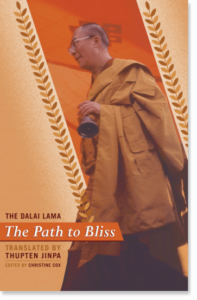
| The following article is from the Spring, 1991 issue of the Snow Lion Newsletter and is for historical reference only. You can see this in context of the original newsletter here. |
The following excerpt is an extract from the chapter on Death and Impermanence
The Path to Bliss, now published under the titles The Complete Foundation
A Practical Guide to Stages of Meditation
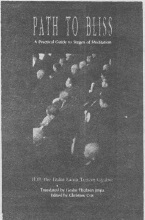 You should develop the conviction that awareness of death and impermanence is an important element of the Buddha's teaching, and that this is why the Buddha taught impermanence at the beginning of all his teachings when he first taught the Four Noble Truths.
You should develop the conviction that awareness of death and impermanence is an important element of the Buddha's teaching, and that this is why the Buddha taught impermanence at the beginning of all his teachings when he first taught the Four Noble Truths.
The first phase of the practice is to restrain the negative actions that could propel you to lower realms of existence. The cause of your body is contaminated actions and delusions, and as long as you are under their influence there is no place for happiness. In a similar way there is no possibility of happiness and peace while someone is under the leadership of a very negative person. Therefore, reflect upon the fact that you are under the rule of ignorance; ignorance is like the despotic king, and anger and attachment are like his ministers. We live under the tyranny and influence of ignorance, the self-grasping attitude, and also the self-cherishing attitudefactors that all the buddhas and bodhisattvas treat as real enemies. The worst thing is to be under the influence and grip of these negative factors.
The second phase is to engage in the method of rooting out the delusions that are the root of these negative actions. This is done by applying their opponent force, the wisdom realizing emptiness, which eliminates the grasping at self-existence. Eliminating these delusions, together with their root, marks the achievement of liberation.
The third phase is to eliminate the dispositions or imprints left by the delusions that obstruct you from achieving omniscience, the direct knowledge of all phenomena. This should be done by complementing the wisdom realizing emptiness with the factors of methodcompassion, bodhicitta, patience, generosity and so forth. If you are able to cultivate a powerful mind that focuses on the welfare of infinite numbers of sentient beings, you will develop a courage that is able to endure infinite hardships for their benefit. Because of the great power of this practice, you will be able to accumulate great stores of merit. When you accumulate these stores of merit by complementing the wisdom of emptiness with the powerful factor of method, you will be able to free yourself totally from all wrong views and misconceptions.
Even in ordinary terms, you would need to have a certain fear of impending danger in order to seek a refuge. Similarly, in order to have a firm practice of refuge, it is first very important to recognize the danger that you are facing. Doing this depends upon a recognition of the unsatisfactory and pain-producing nature of life in this cyclic existence. When you have clearly recognized the frustrating nature of life in this cycle of existence in general, and the sufferings in the lower realms in particular, a genuine desire to seek refuge will follow. To achieve such a recognition, some reflection on impermanence and death is essential. Therefore, when the Buddha taught the Four Noble Truths, he first spoke of impermanence.
The lack of death awareness prevents one from undertaking the practice of dharma. This is very true: If one is not aware of the eventuality of death, one will be totally concerned and preoccupied with the affairs of this lifetime alone, and with actions that are just for the benefit of this lifetime. Such ventures may take all one's time and energy, but no matter how important they appear to be, since they are directly related to this lifetime alone, their benefits are limitedonce one leaves the present body, their benefit ends. Even though one might have a best friend, when one has to leave the body, one cannot take the friend along.
So many people have been born in this world in the past, but all of them are now just memories. Just as the texts say, great buddhas and bodhisattvas of the past, although great beings, also are only memories. The same is true of great kings and so forth. Reflect upon the fact that even the Buddha himself has passed into nirvana. The same will happen to us. Think of how things will look after one hundred years: none of the people assembled now inside this temple will be alive. Even this building may not remain. To prove this, it is not necessary to quote from scriptures nor to give any logical reasons. Even since last year's teachings, I can see that some of my friends have passed away. The same will happen to those who have gathered here this yearnext year when we gather for the teachings it is definite that some of us will be no morebut none of us will even have the thought, It will be me," because of our strong habituation to the apprehension of permanence.
Think that after twenty or thirty years even the Dalai Lama, who has been talking so much, will also be no more. While I am alive, there will be people who are, from the depths of their hearts, prepared to give their lives for my sake, but on the day when I have to leave, I cannot take even one among them with me. Neither will I be able to take any of my possessions, even the body which has been with me since the time of my birth and which I have always preserved and protected. This also will be left behind. At that time of my death, what will benefit is only the positive seeds that are imprinted upon my consciousness. No other factors will help at that time. This is very true, a fact that can be proved and observed.
Therefore, if you are totally concerned and preoccupied with the affairs of this lifetime, there is a great danger of causing your own downfall. If by such concern you were able to achieve the desired happiness, that is okay, but this is not the case. We all let ourselves be caught in this web of preoccupation with the activities and confusion of this lifetime. Having too much worldly involvement ends in confusion. We spend our whole lives thinking that this might be better than that, I should do this, or perhaps something else is better and I should do that. If you reflect upon the underlying dissatisfaction, then you will be able to find that, well, after all, whatever they might be, the affairs of this lifetime are not that important, because they yield a limited benefit. This does not mean that you should not work for your own livelihood, but it does indicate that you should not be preoccupied with that alone.
Your meditation on death and impermanence should be inspired by great delight. You should see this meditation as a factor that will really encourage you to engage in dharma practice.
If you have the awareness of death you stand to gain a lot. It is important not only at the initial stage, but also during the actual path. When you possess such awareness and mindfulness, although you may work for your own livelihood, you will not take that as the most important thing. If a person has prepared for death from a long time back, when death comes it will not come as a shock because he will be well prepared; he will feel that death is merely like changing his clothes. Whereas if a person just avoids the question of death, trying to forget about it, then when death comes, he might be caught totally unprepared and be bewildered by it.
But if you are mindful of death and have this death awareness, you will always think of the future and make preparations for it, and when death strikes it will not come as a surprise, so you will not be so anxious. Consequently, at that point you will be able to maintain your calmness of mind.
Just requesting prayers from others at the time of death and not doing anything yourself is very improper and contradicts any claim that you are a follower of dharma. Sometimes I actually say this when people come to seek my prayers for them. I know an old Tibetan lady who always used to ask me, Oh, Your Holiness, do not let me fall in the hell realms"as though I have that in my hand! There is nothing I can do if she has done nothing on her part. Not only I, but even the Buddha does not have the power to save such a being. Therefore, the Buddha taught the infallibility of karmic law. If the great beings like the Buddha have the power to determine the fate of the living beings, then there is no need for him to talk about the infallibility of karmic law. If you are equipped with this death awareness, you will always work to accumulate virtuous actions to prepare for your future.
[This section is followed by a meditation on death.]
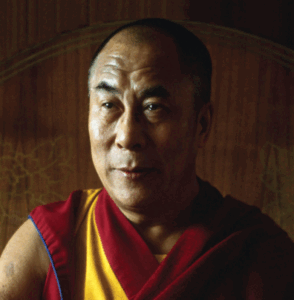
His Holiness the Fourteenth Dalai Lama is considered the foremost Buddhist leader of our time. The exiled spiritual head of the Tibetan people, he is a Nobel Peace Laureate, a Congressional Gold Medal recipient, and a remarkable teacher and scholar who has authored over one hundred books.

